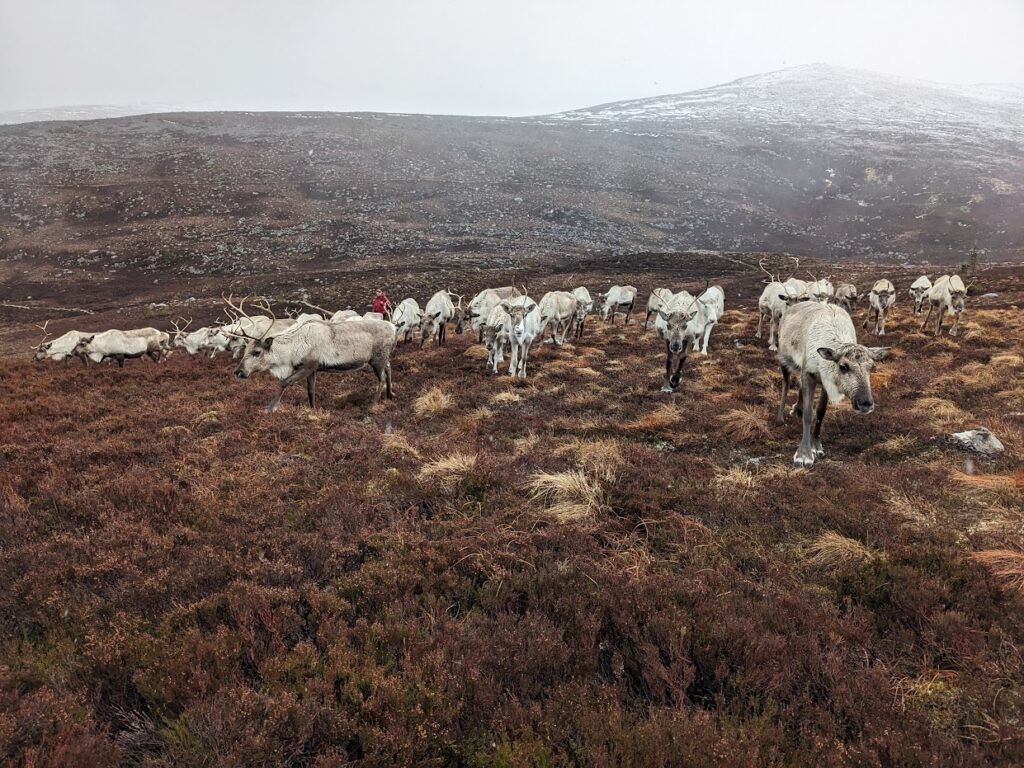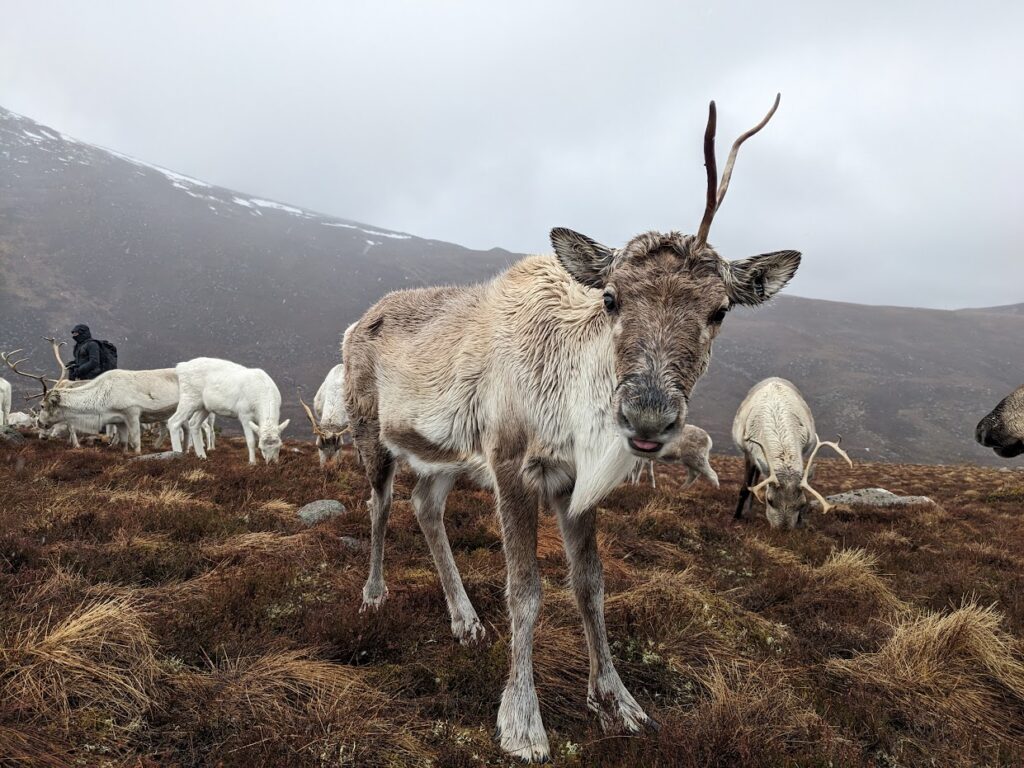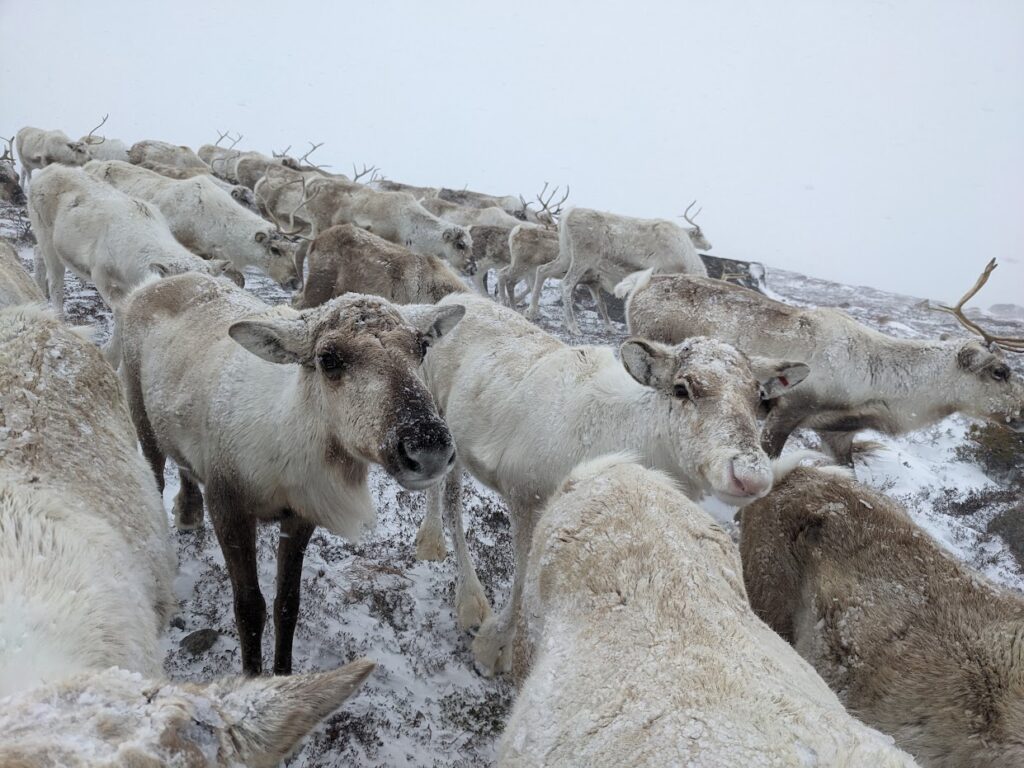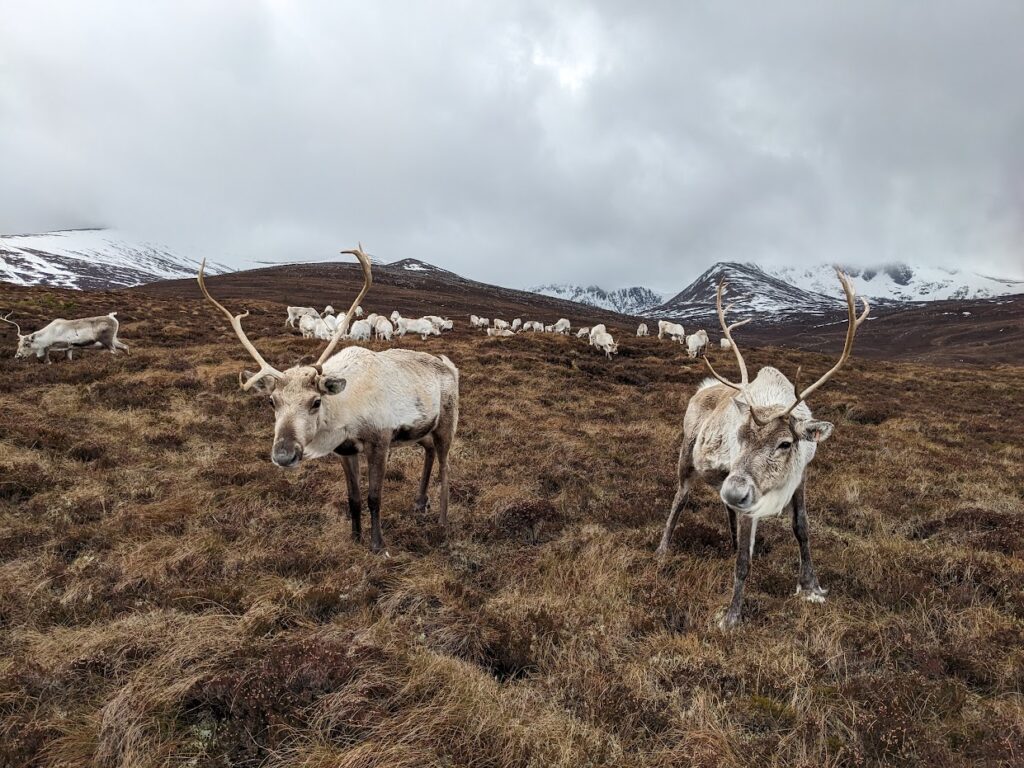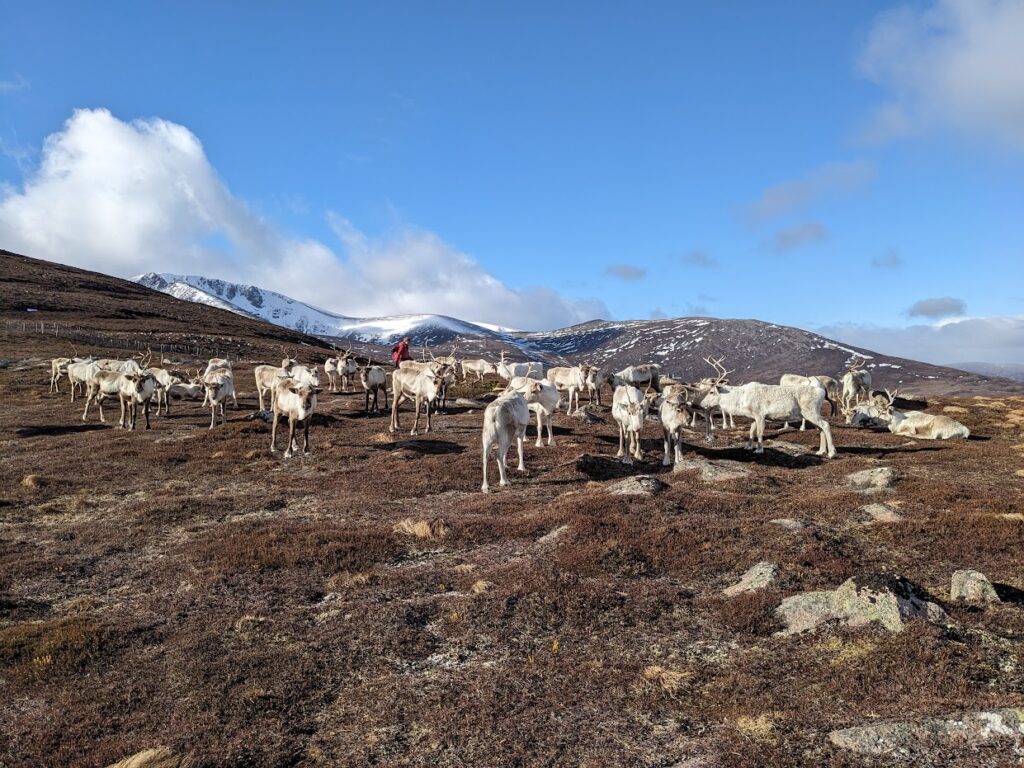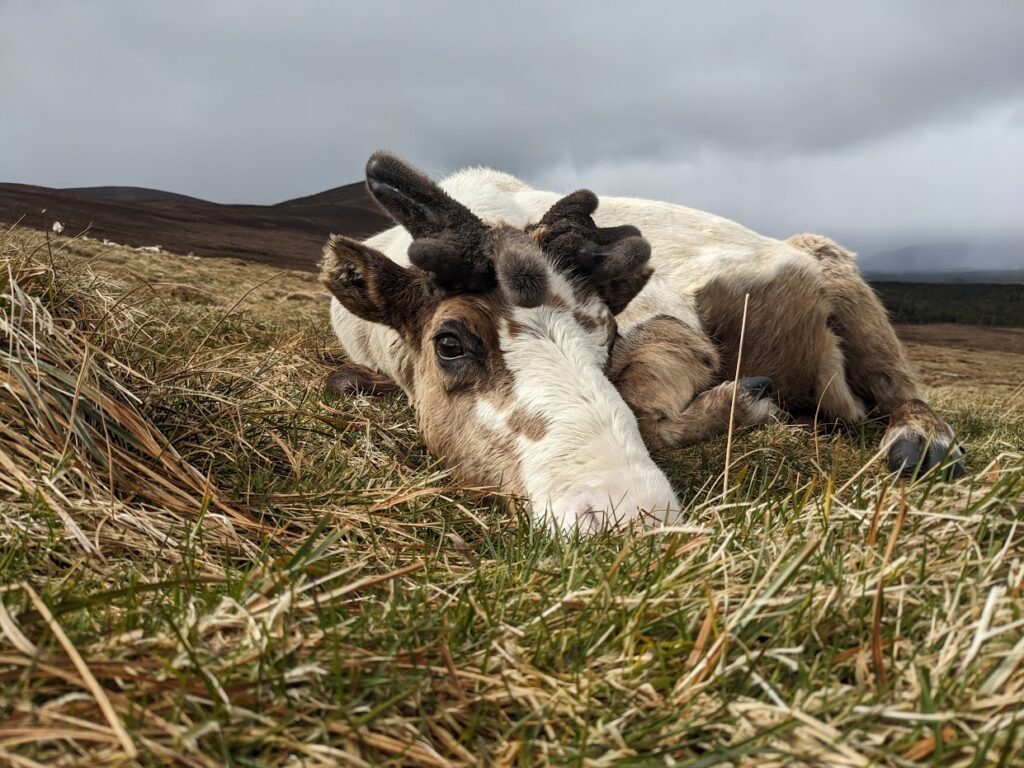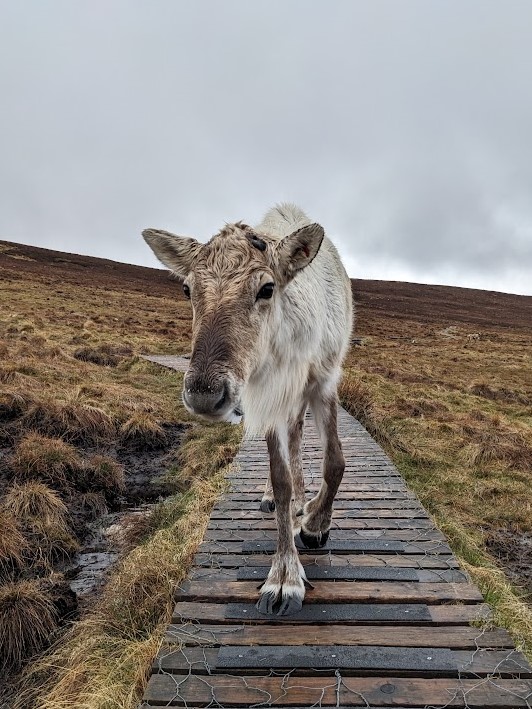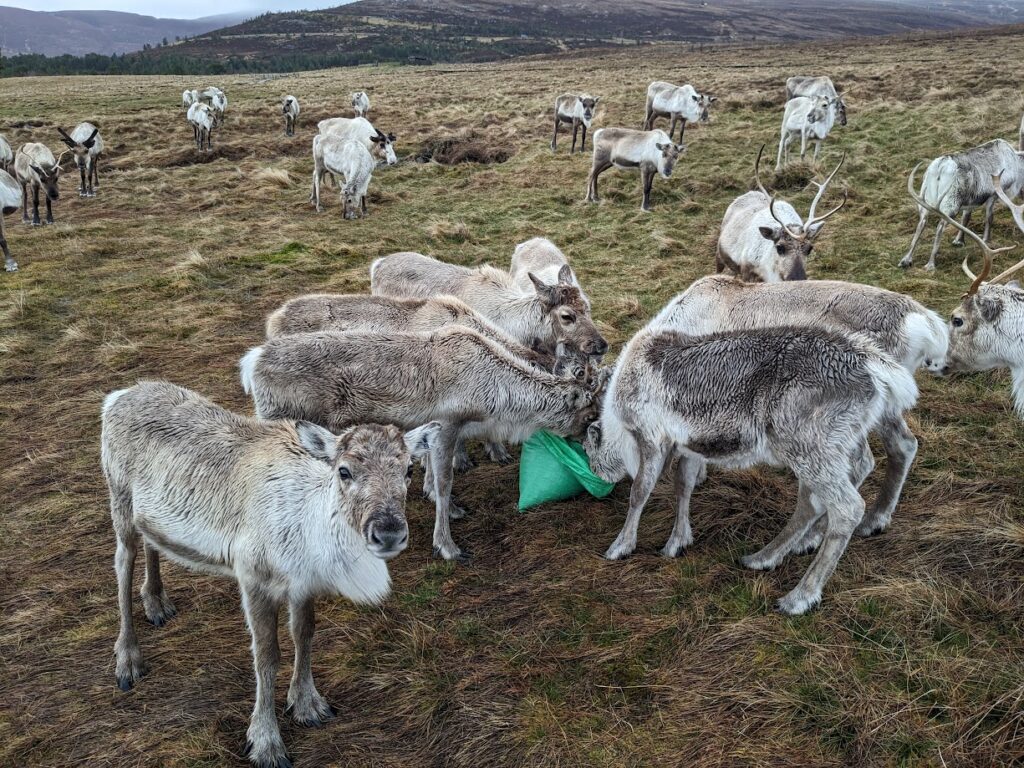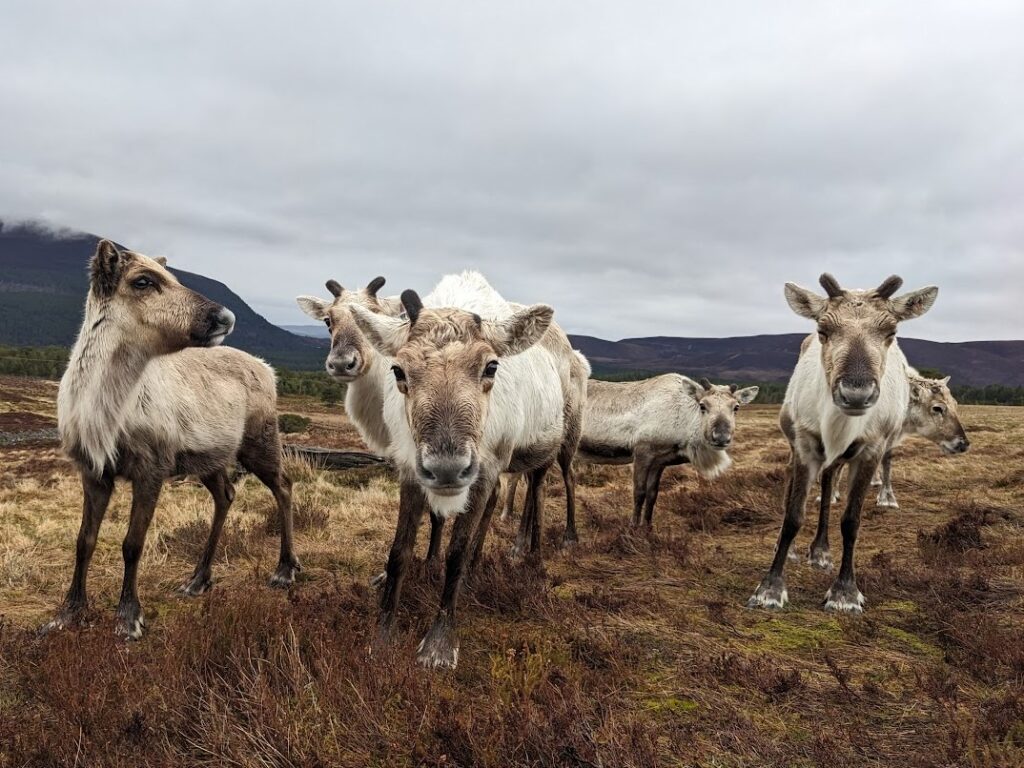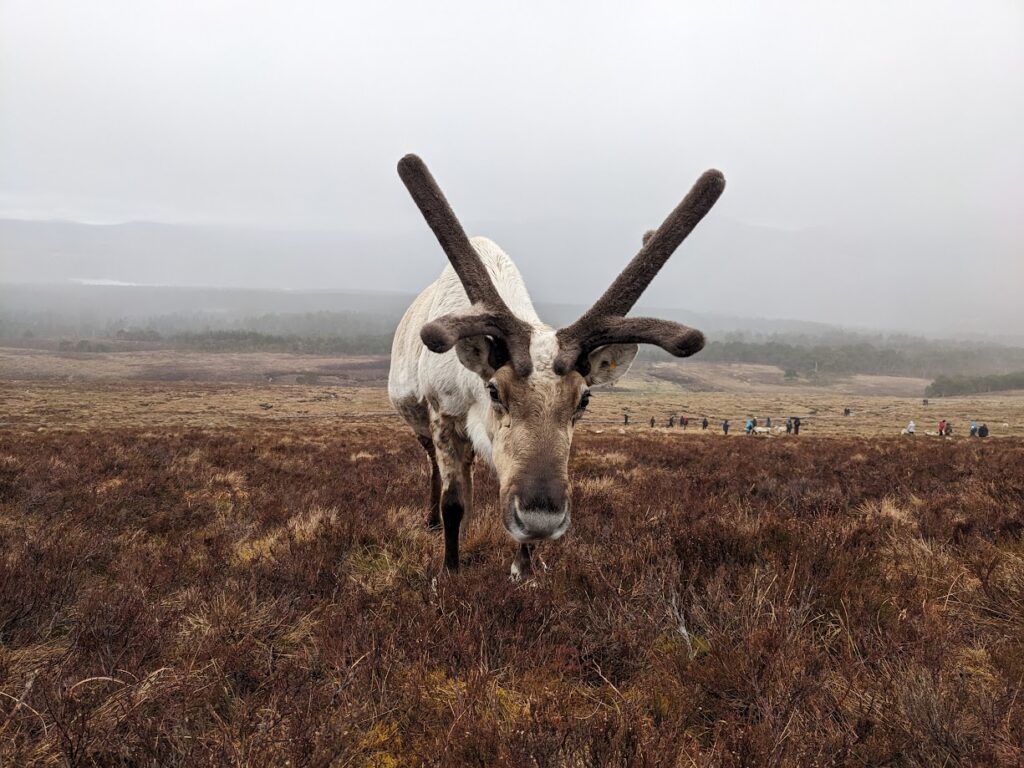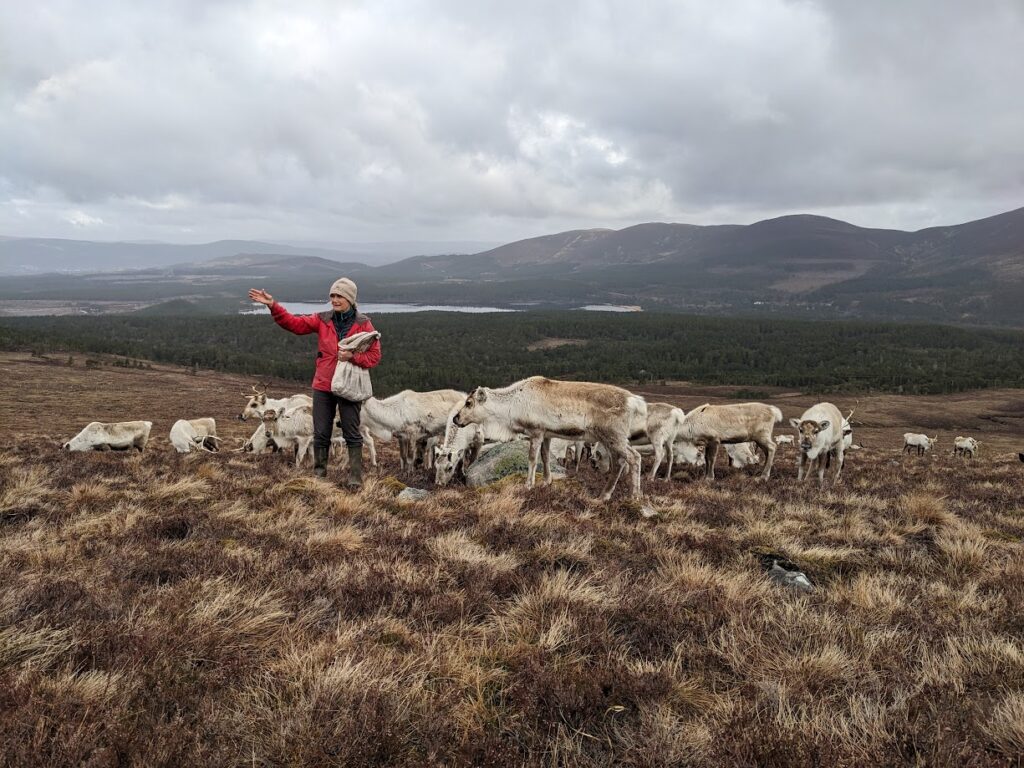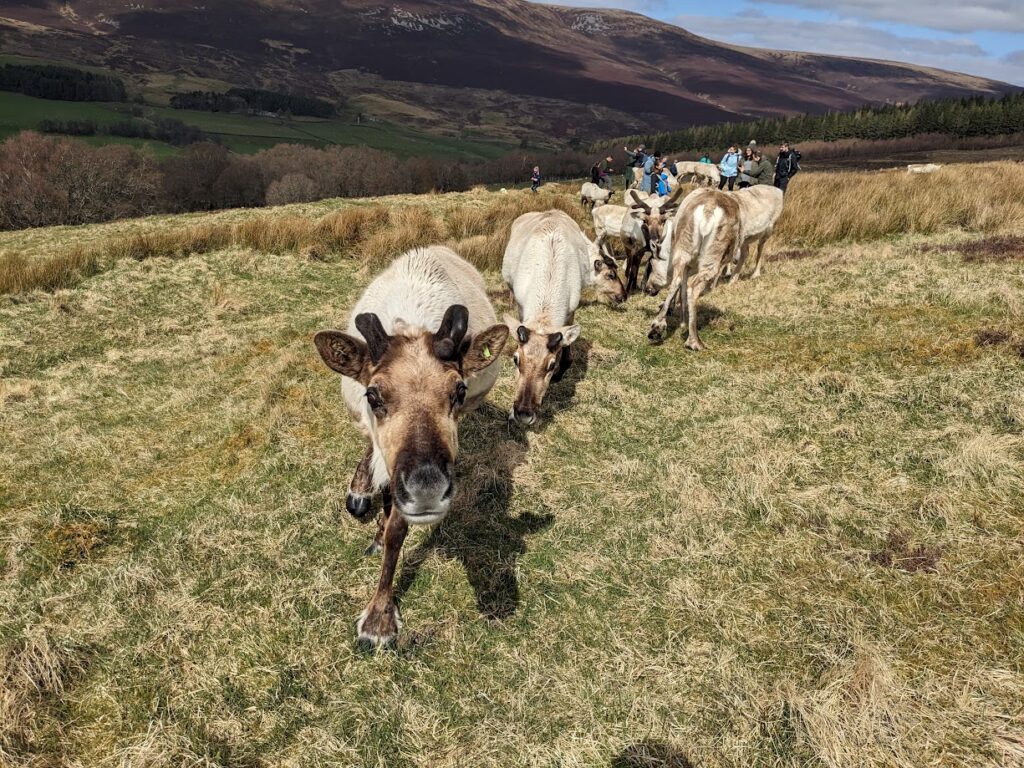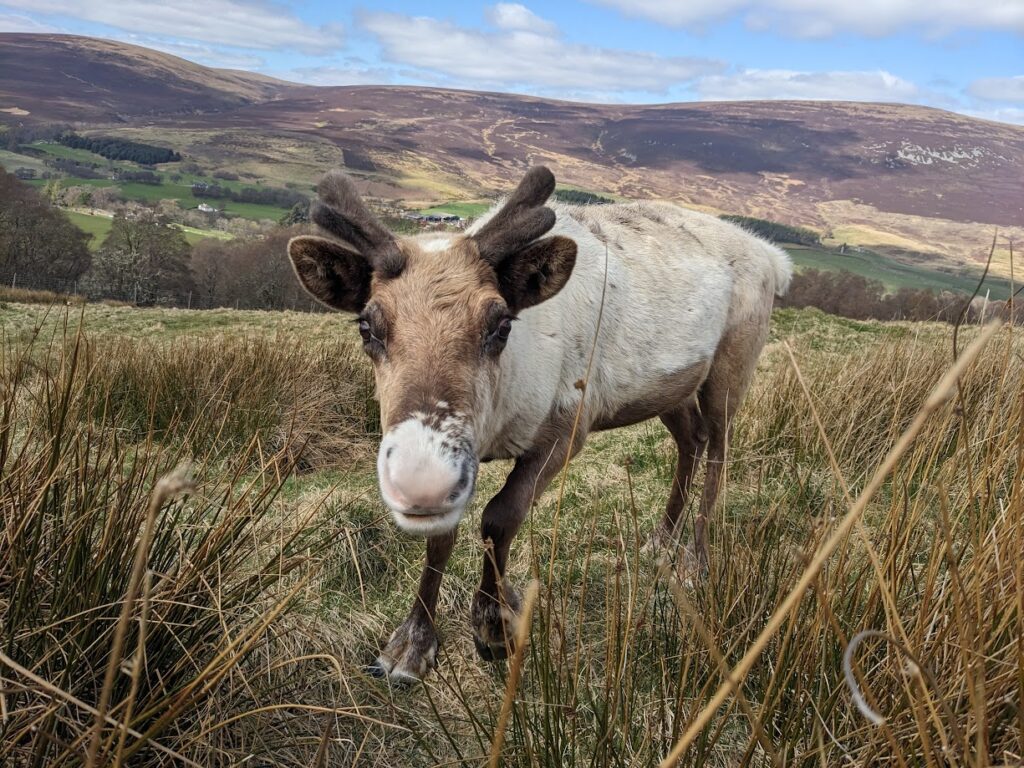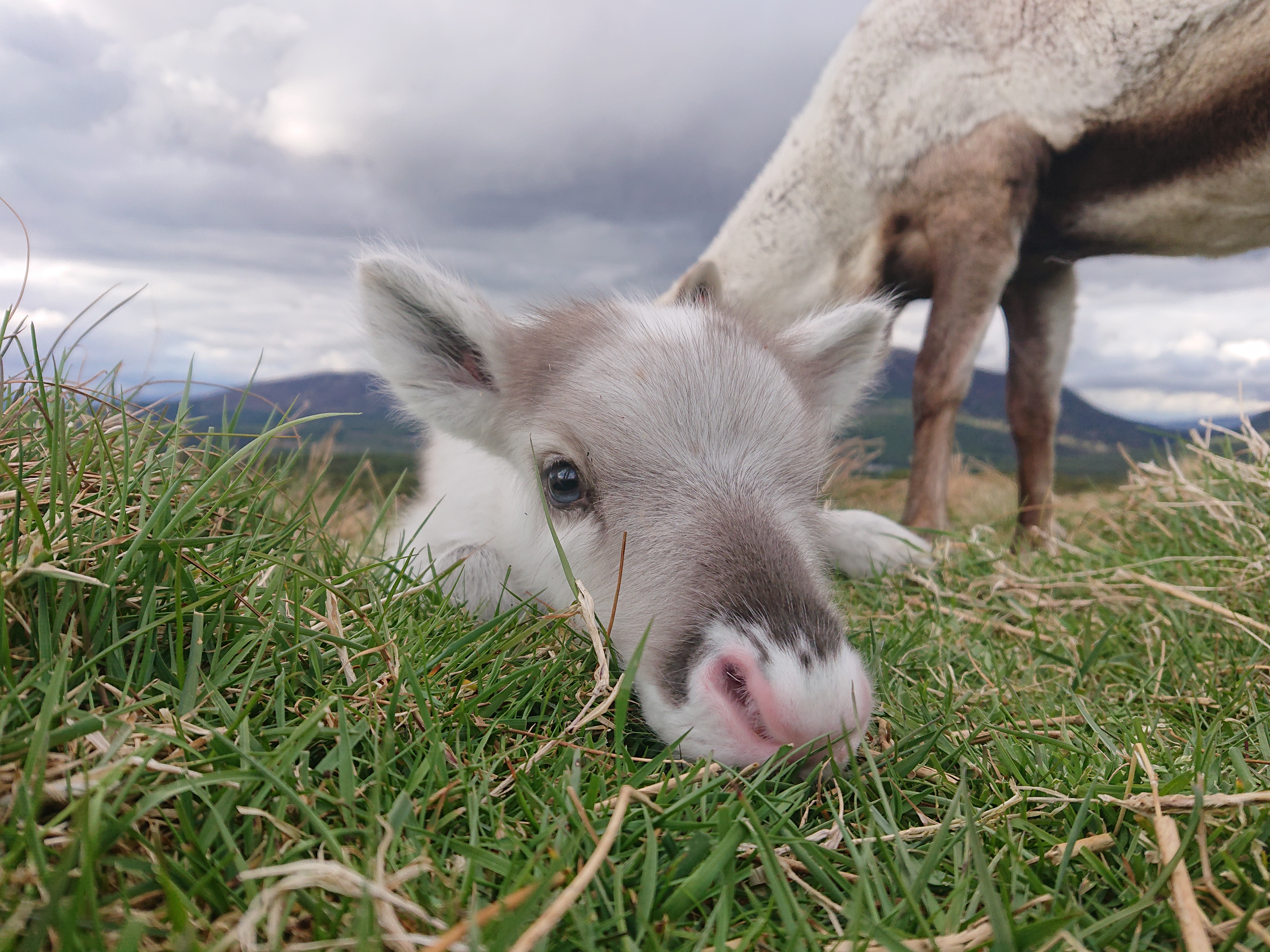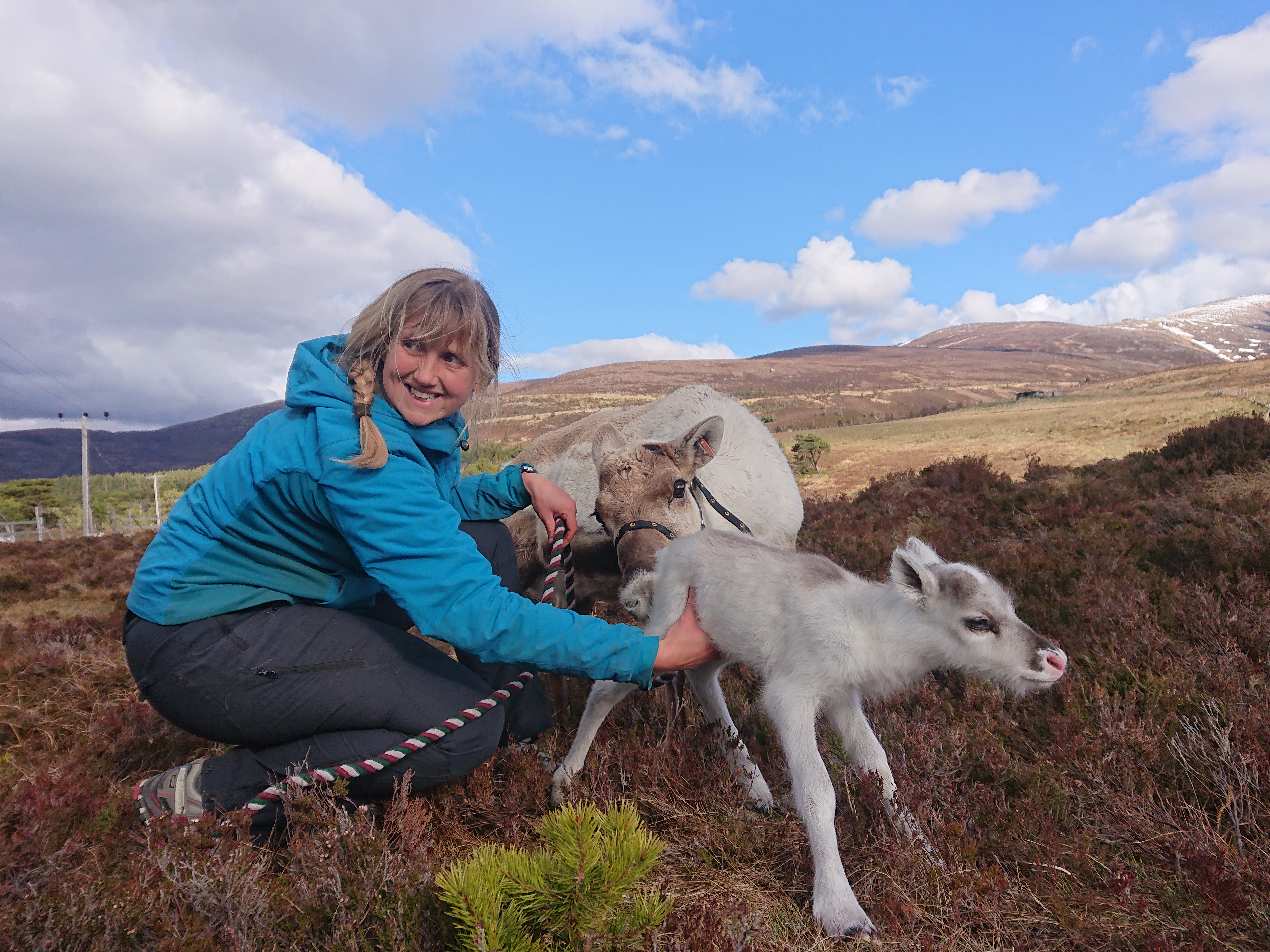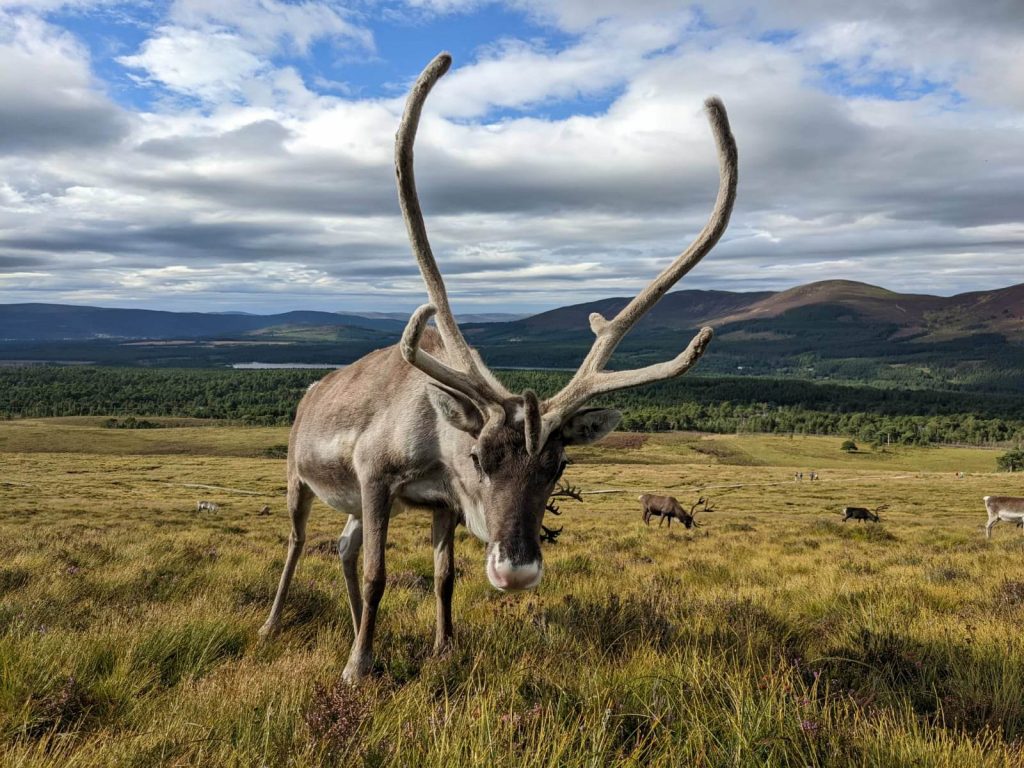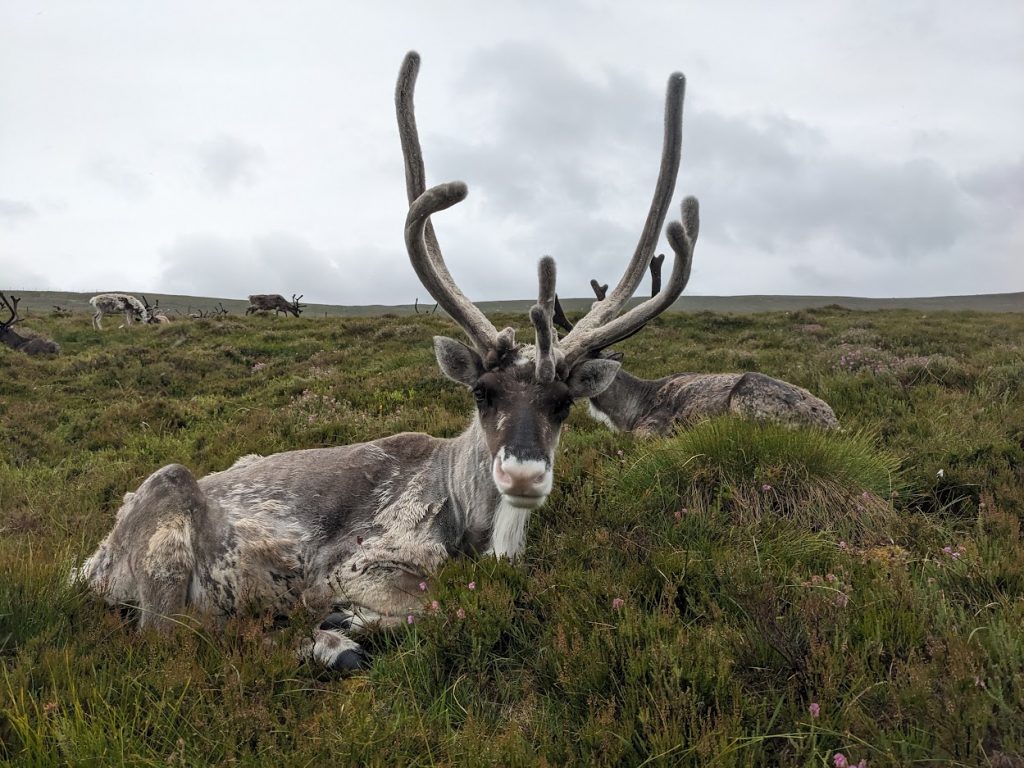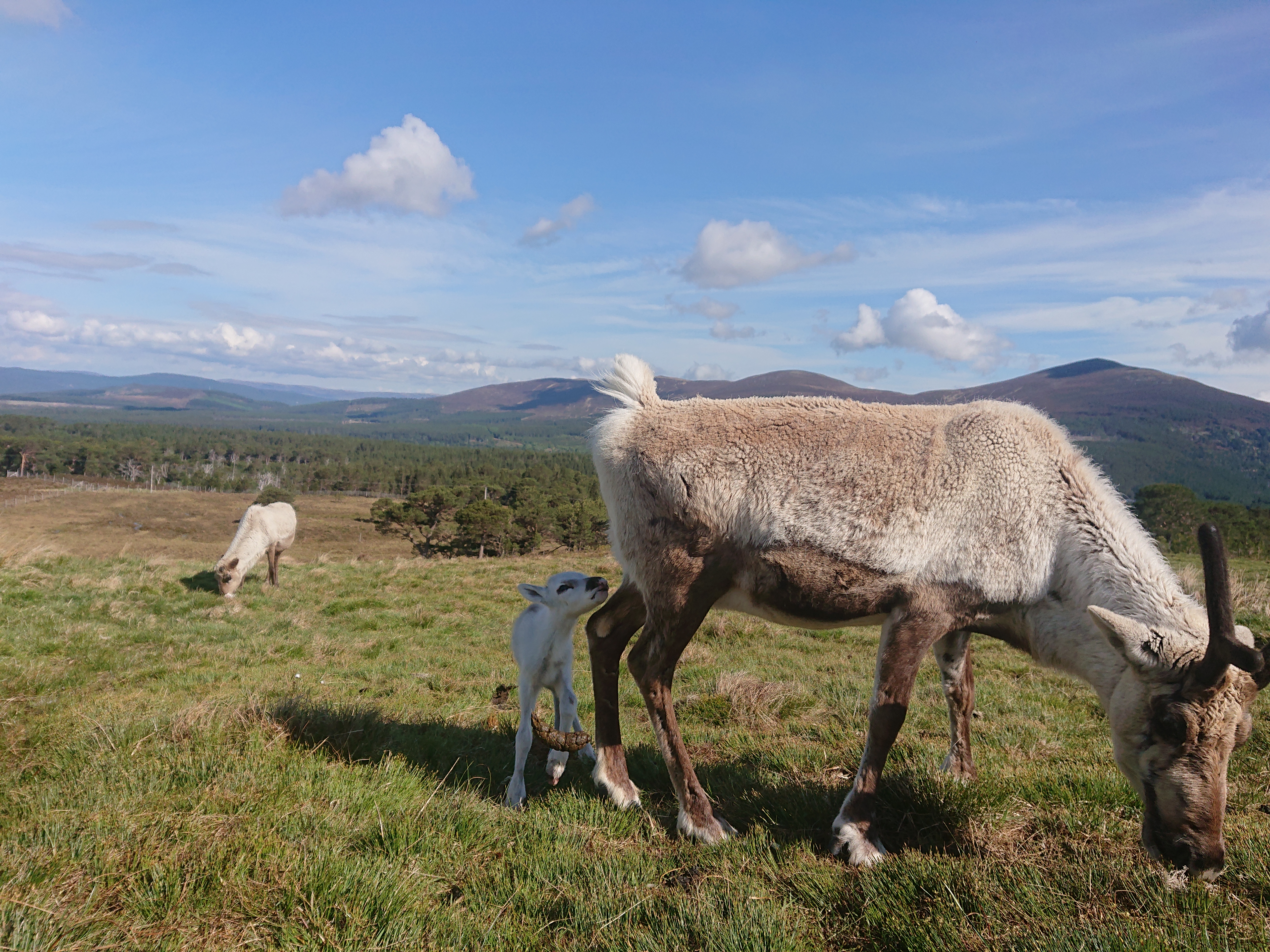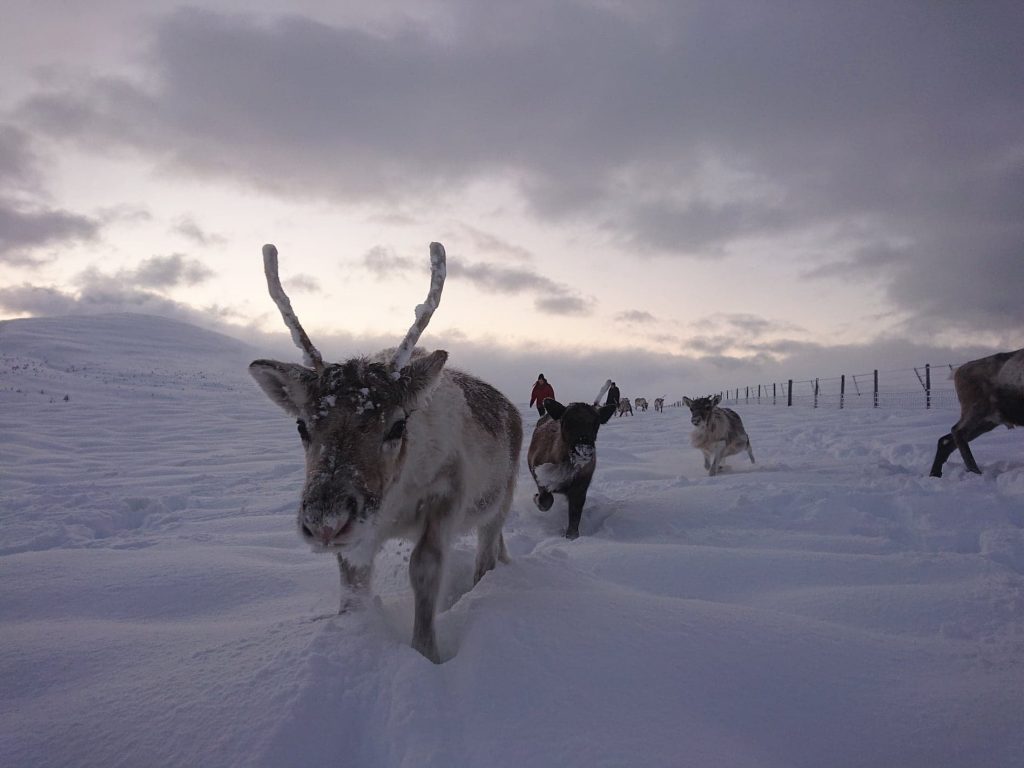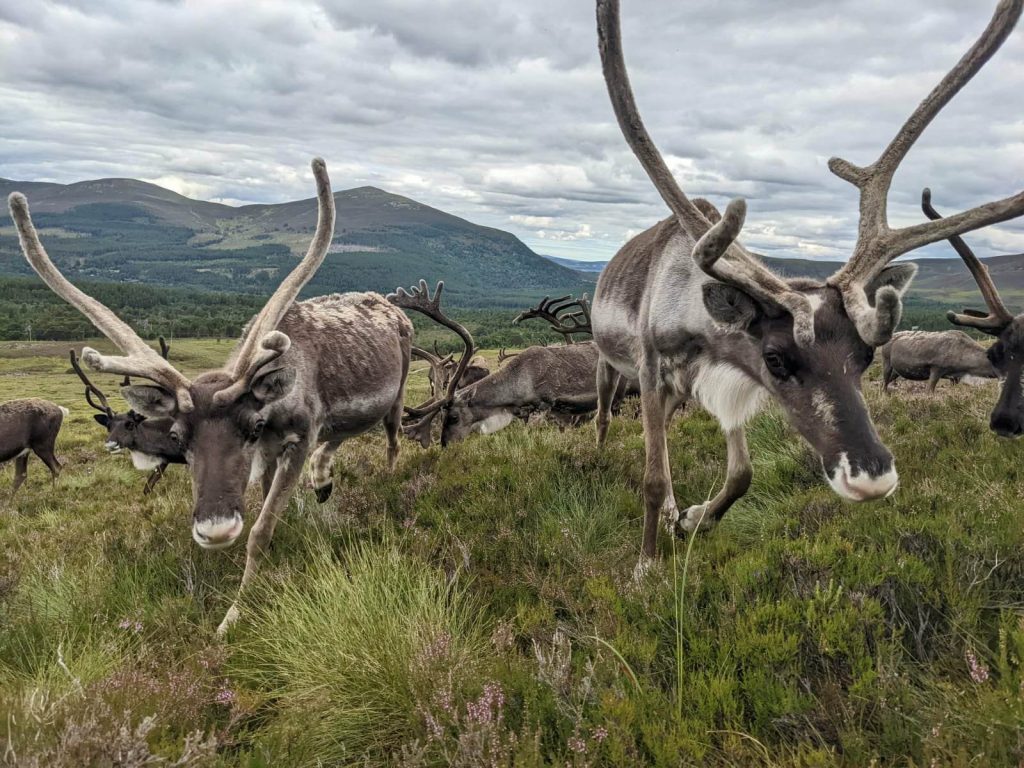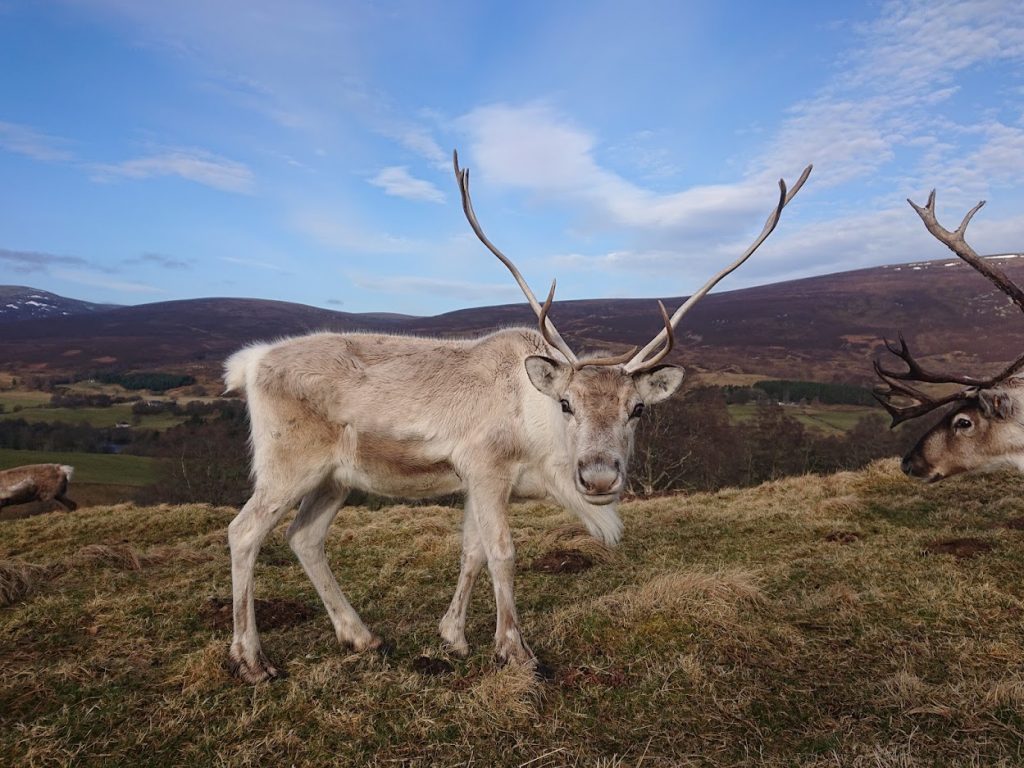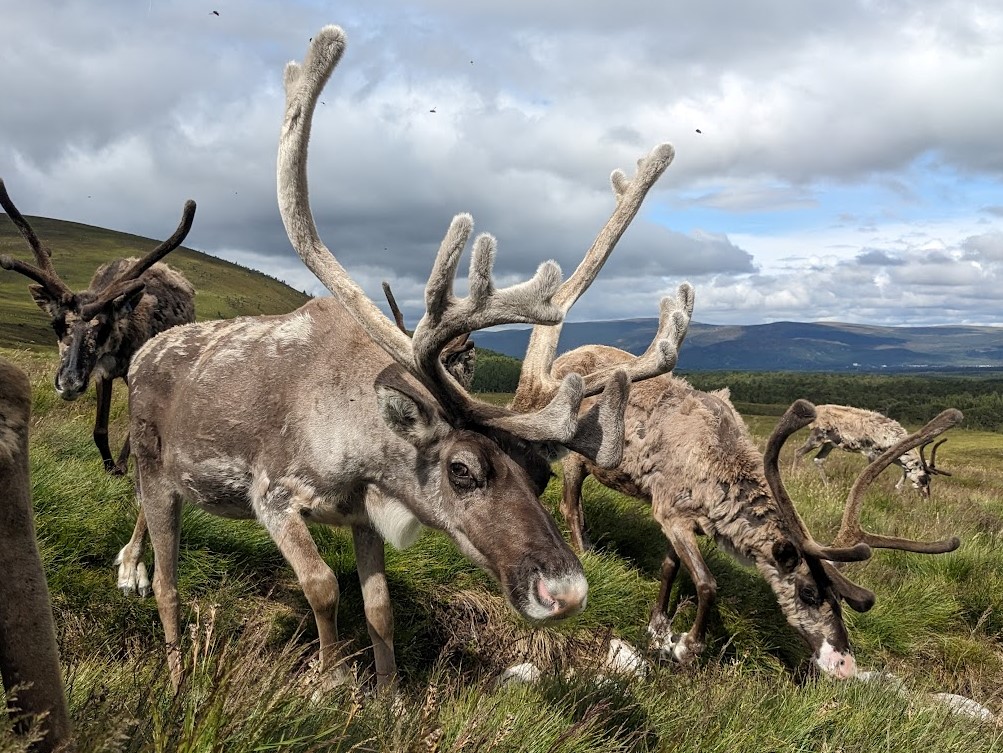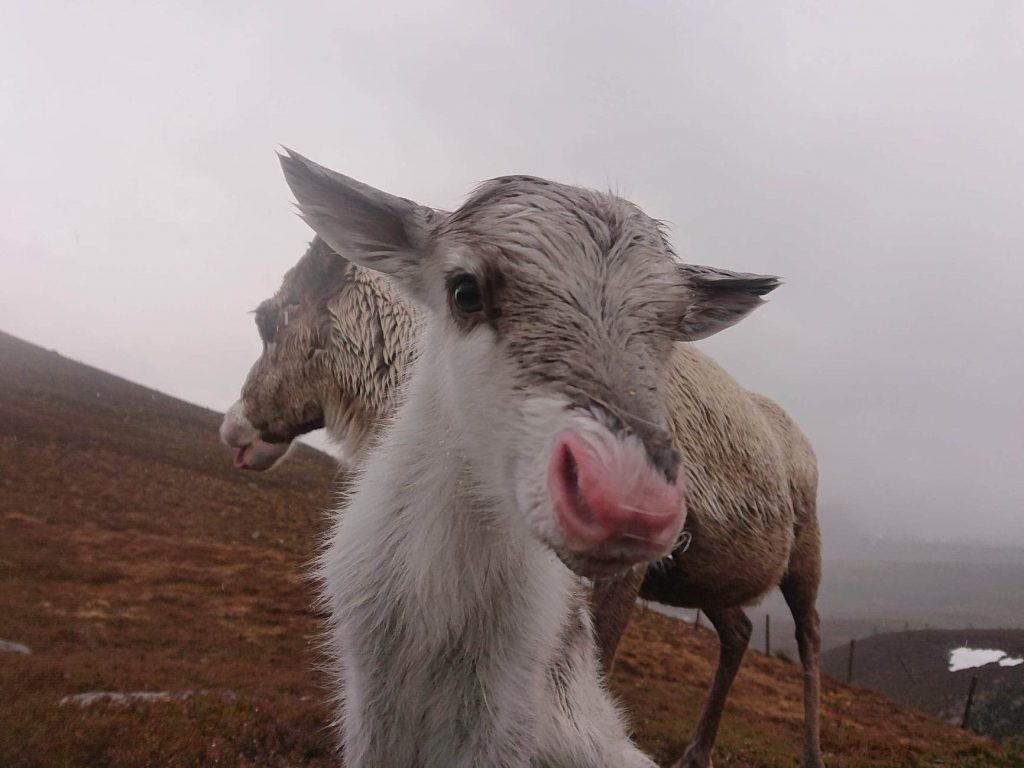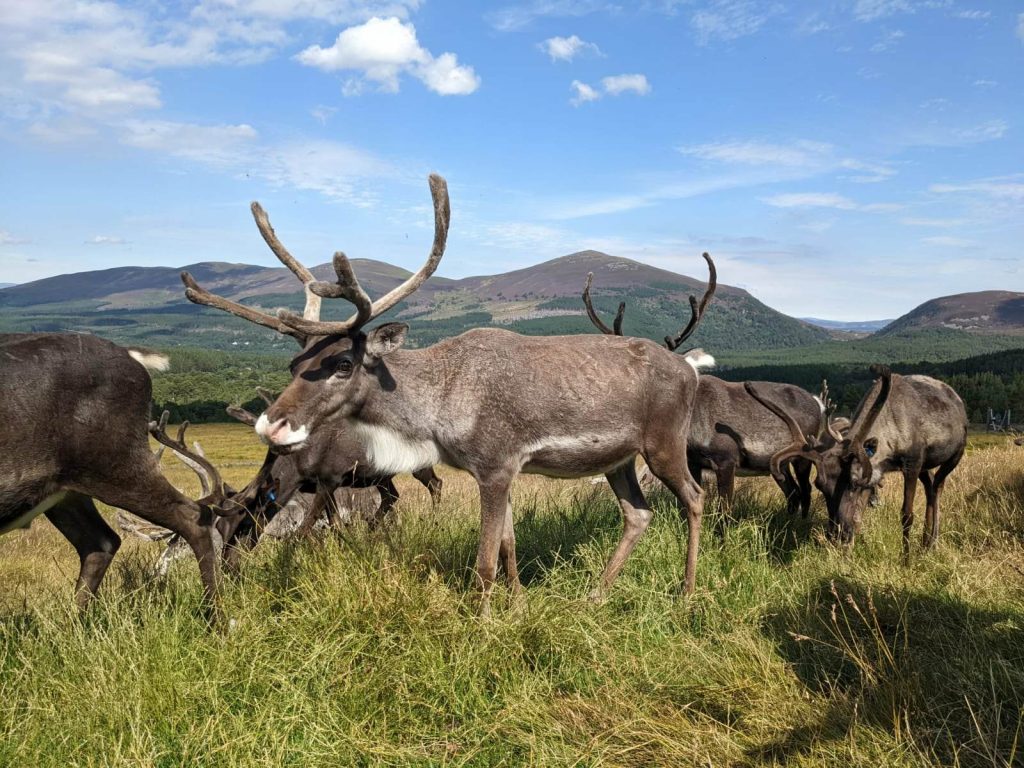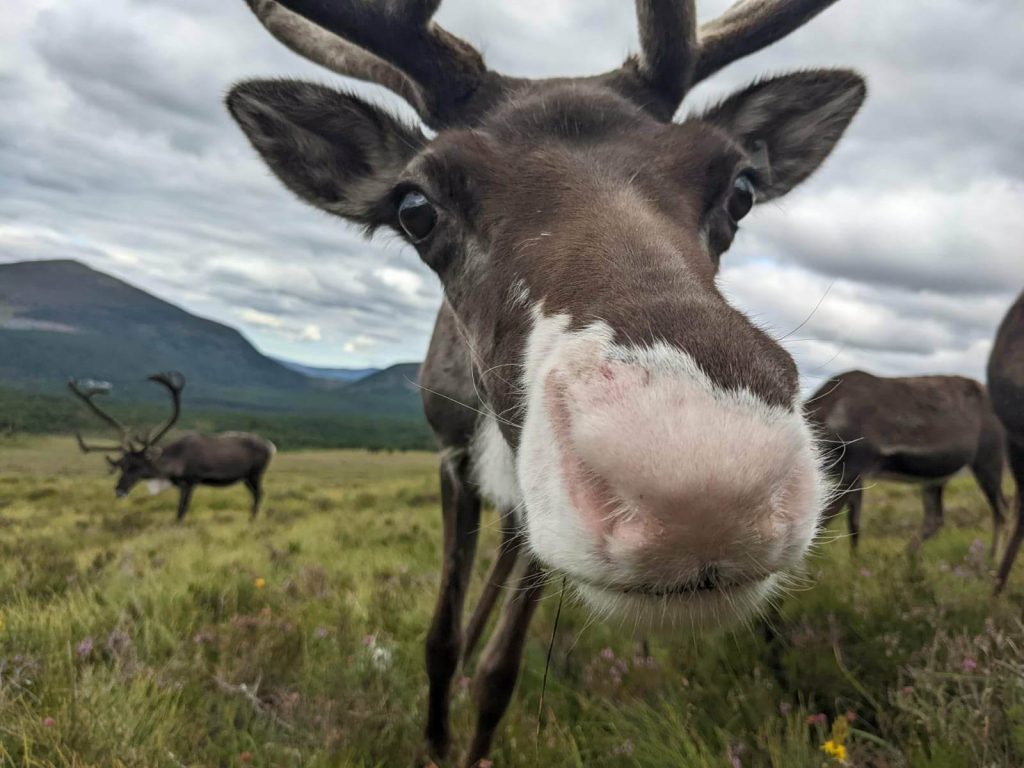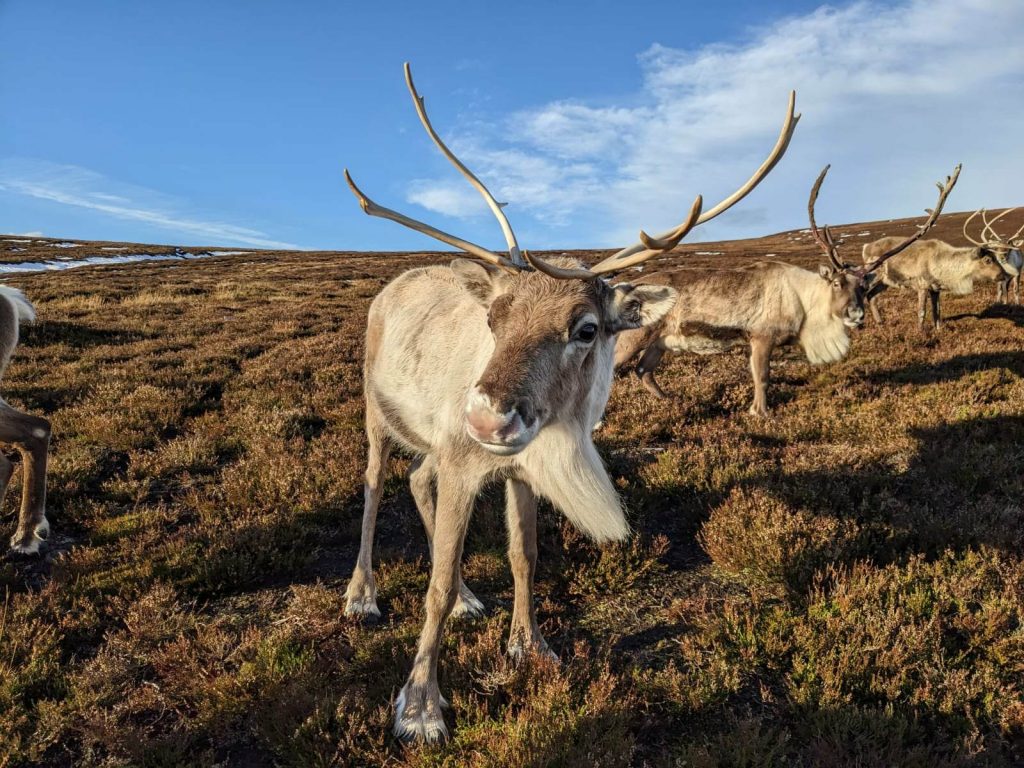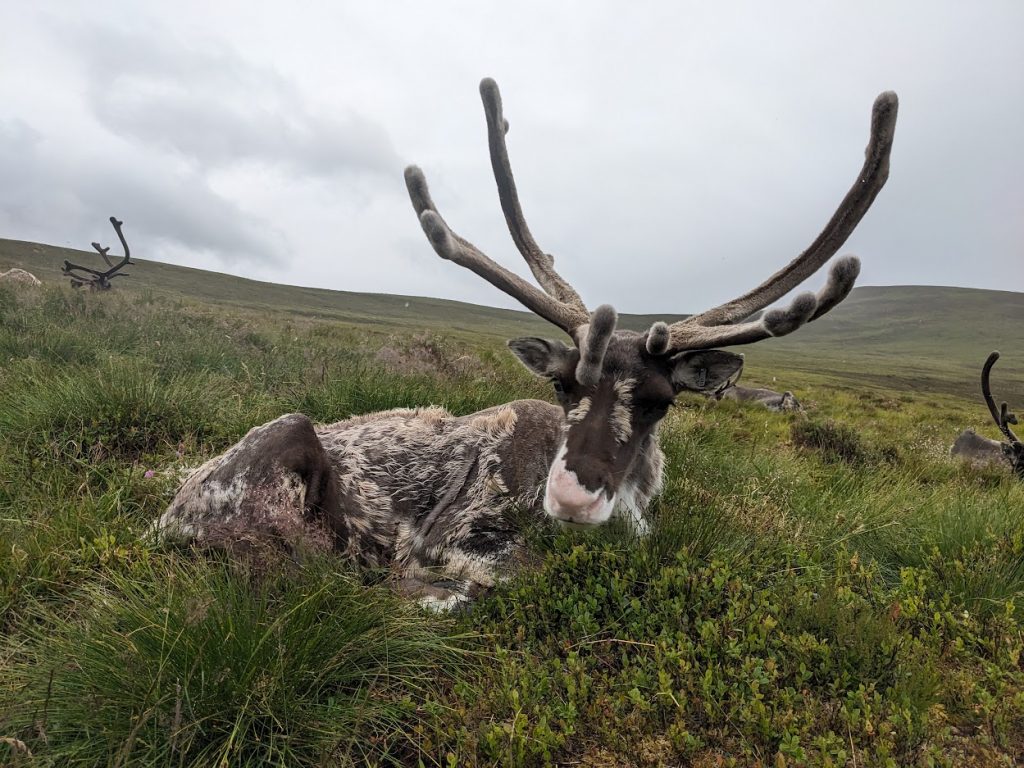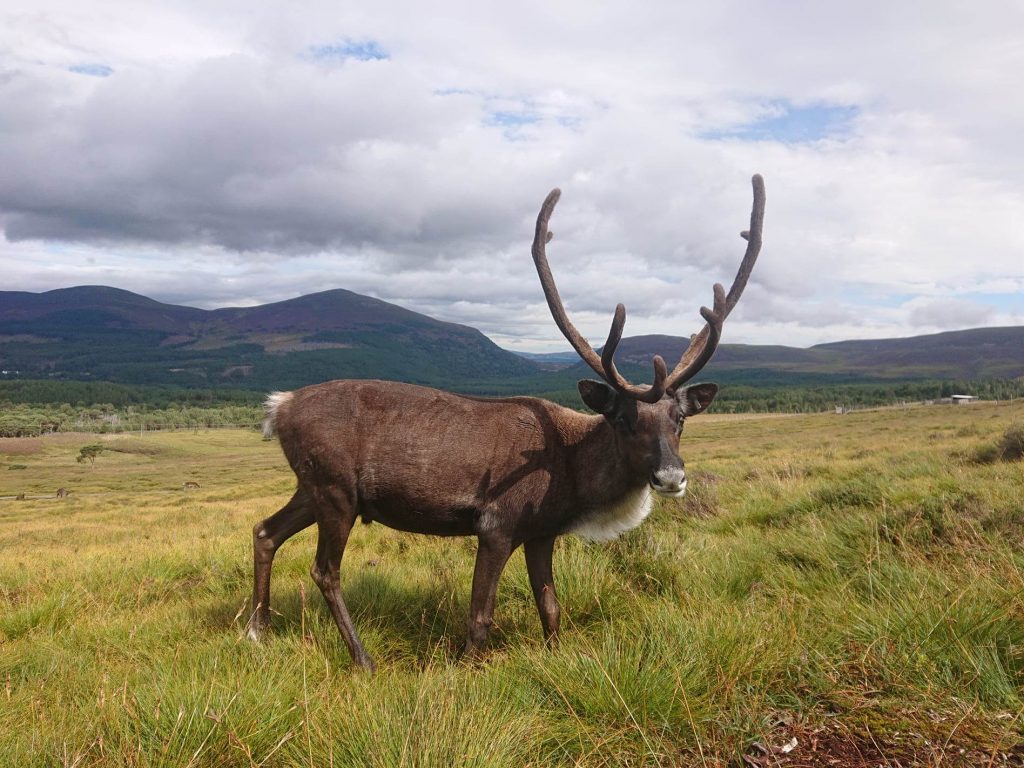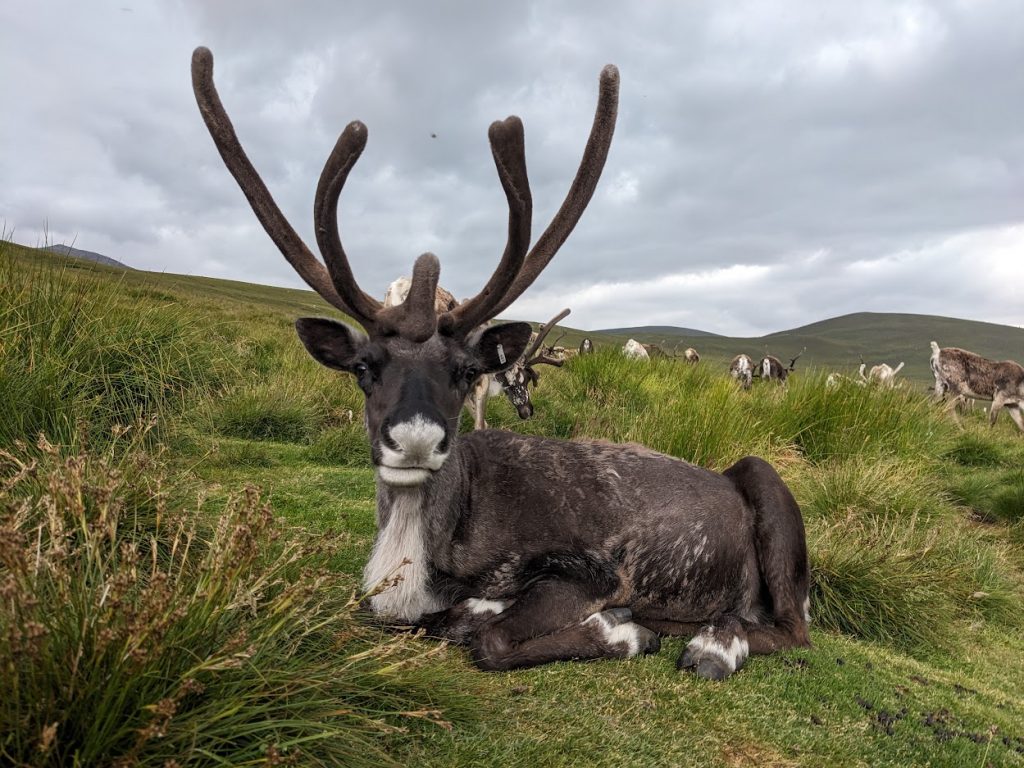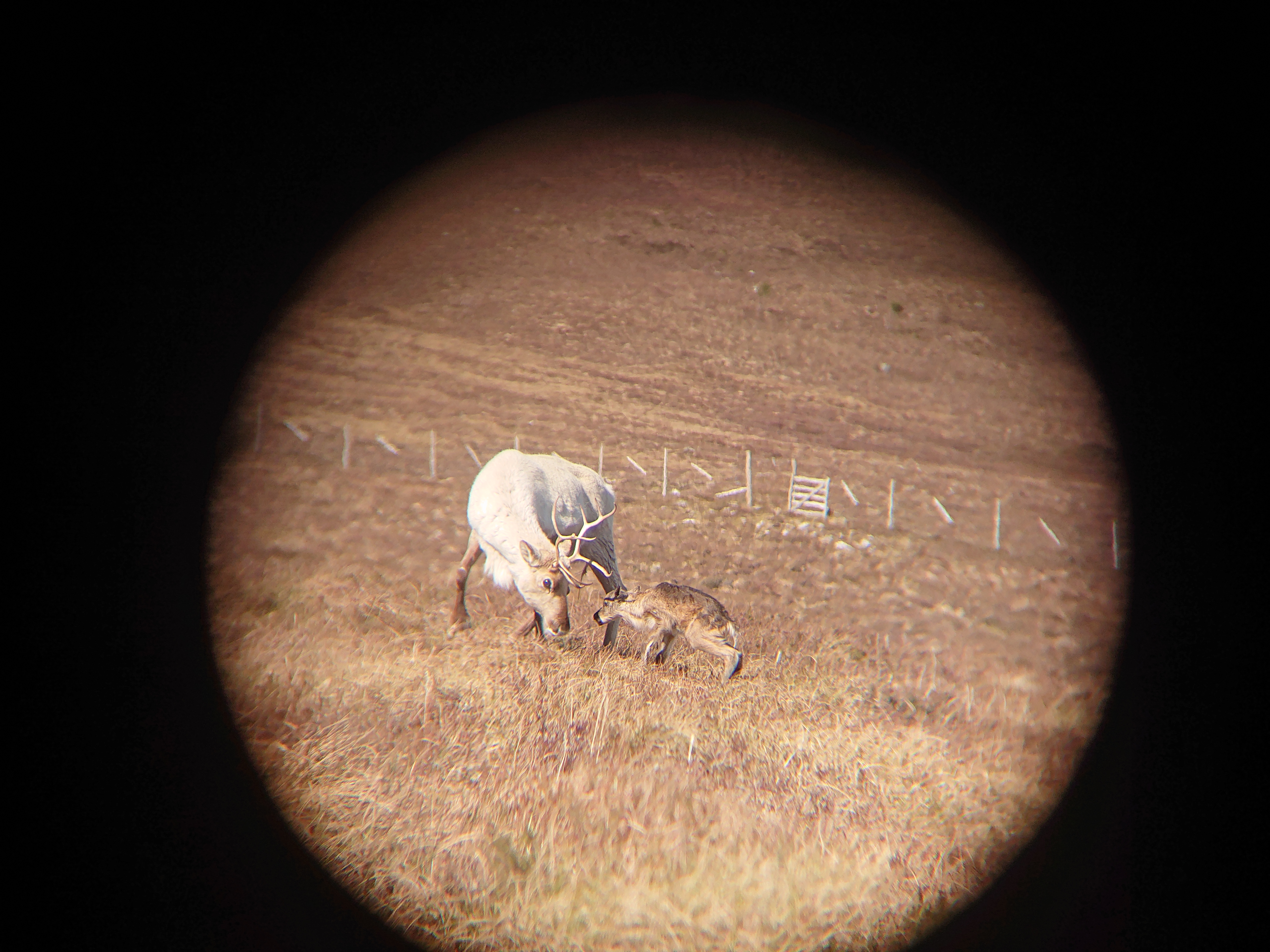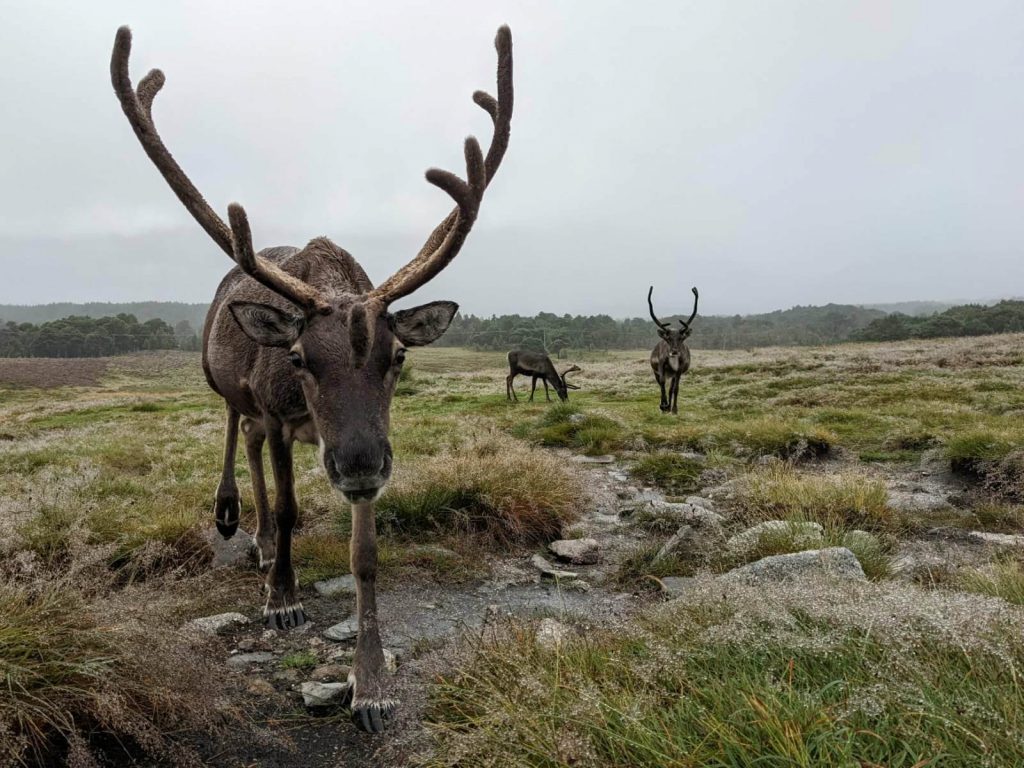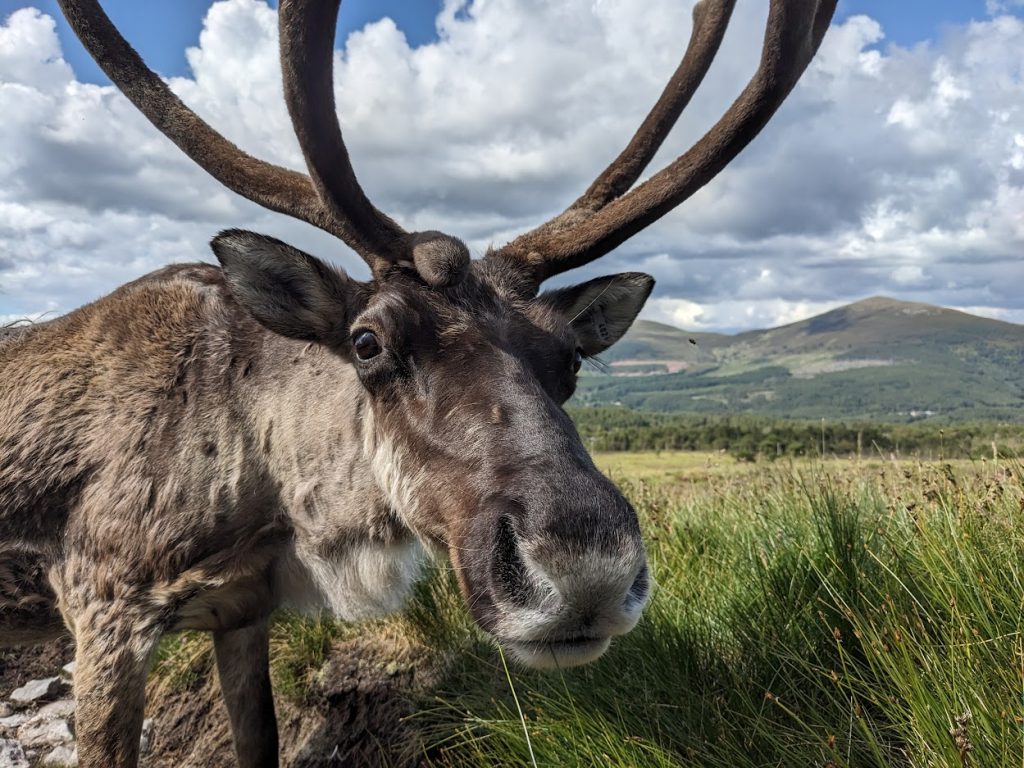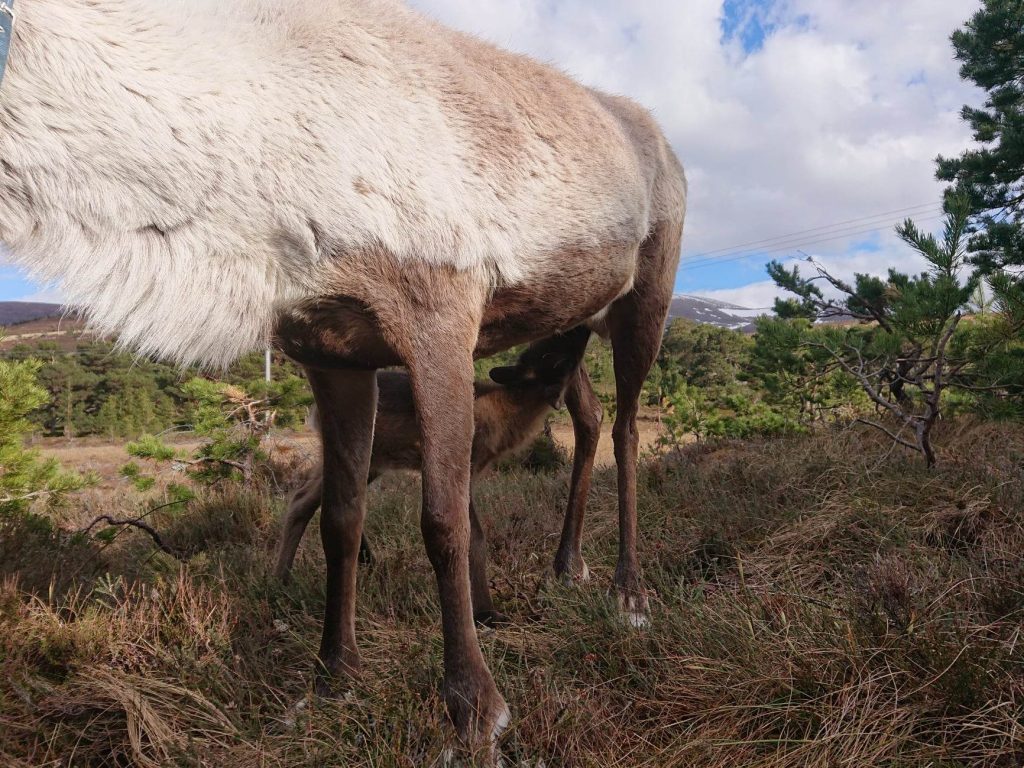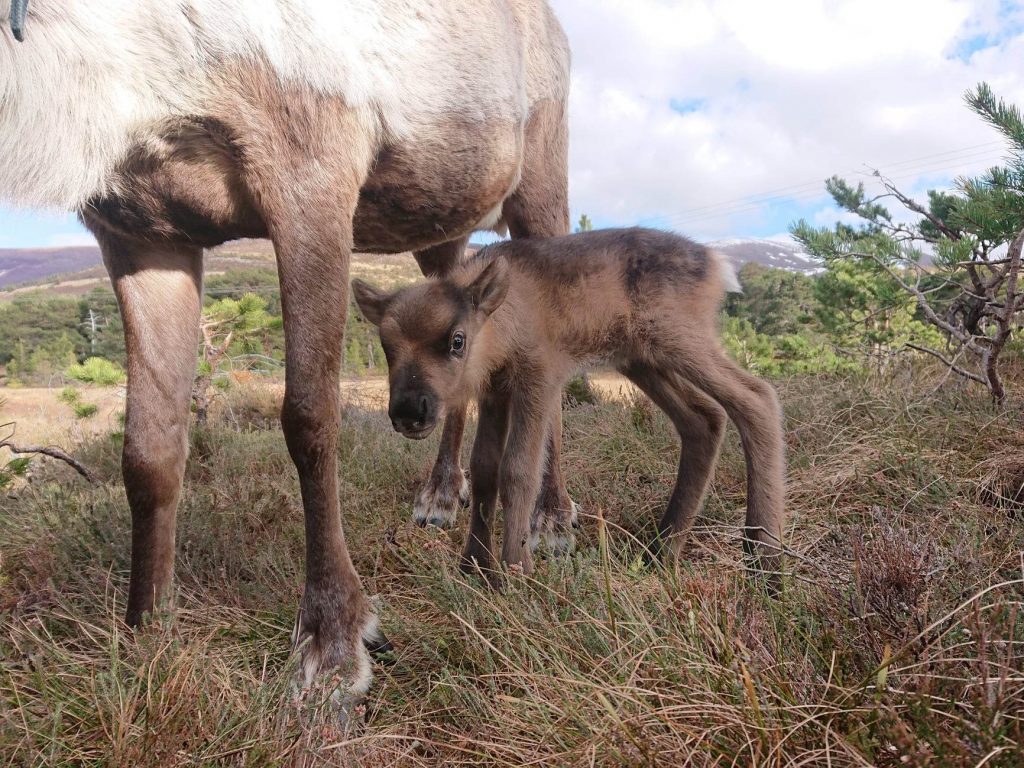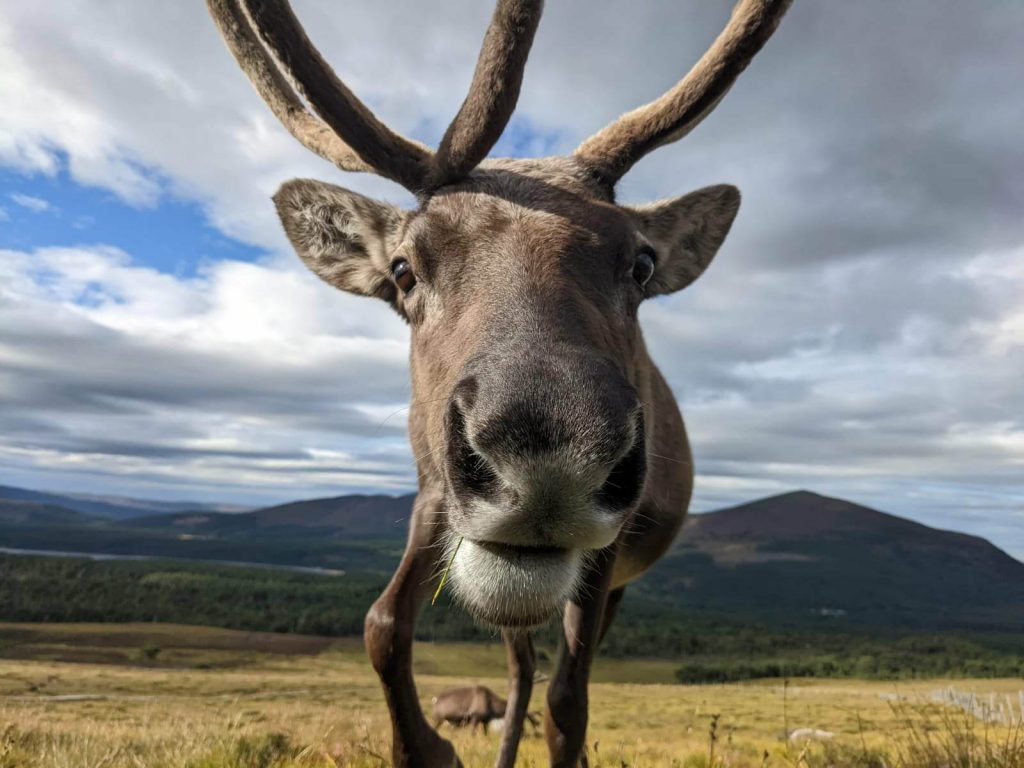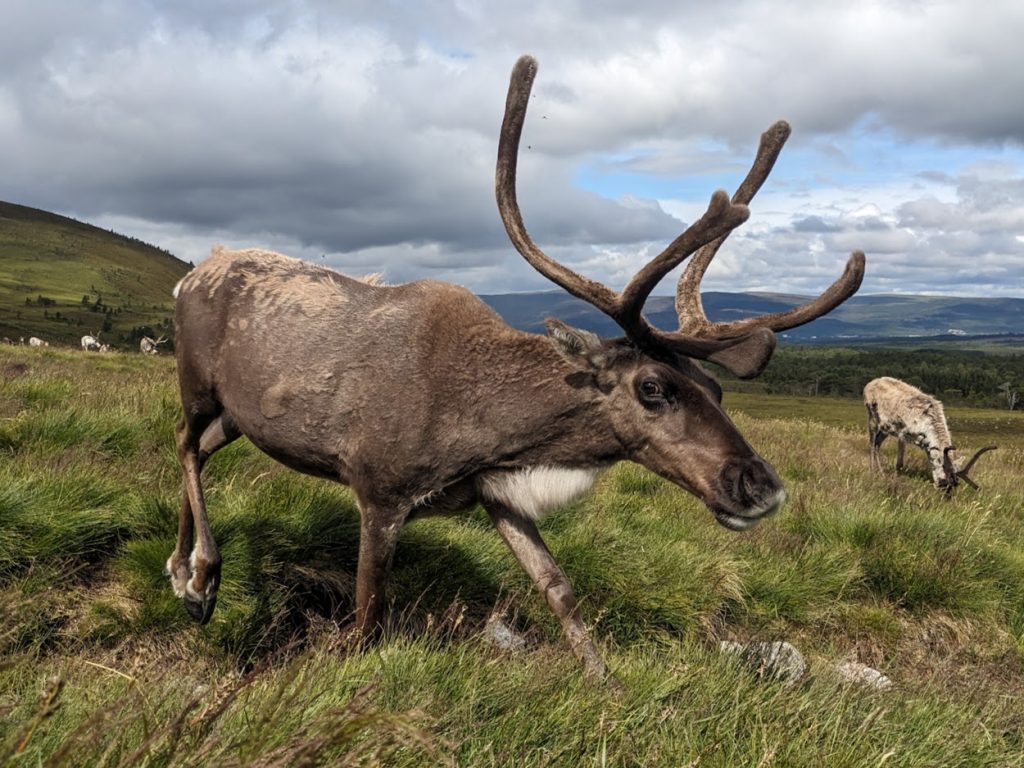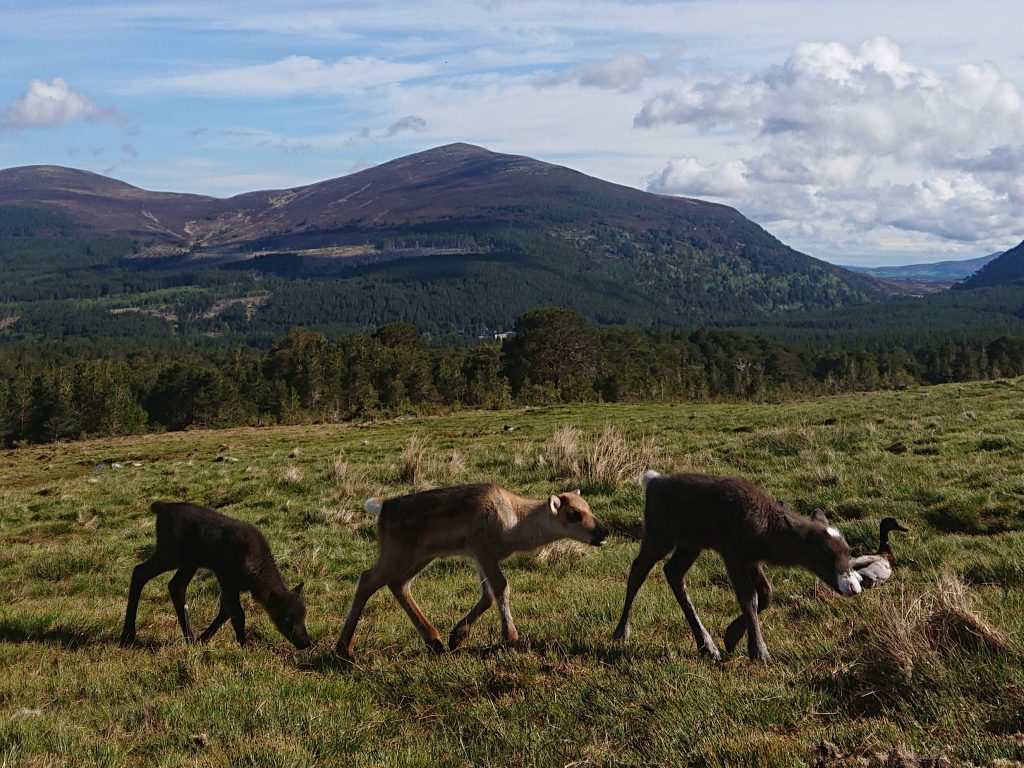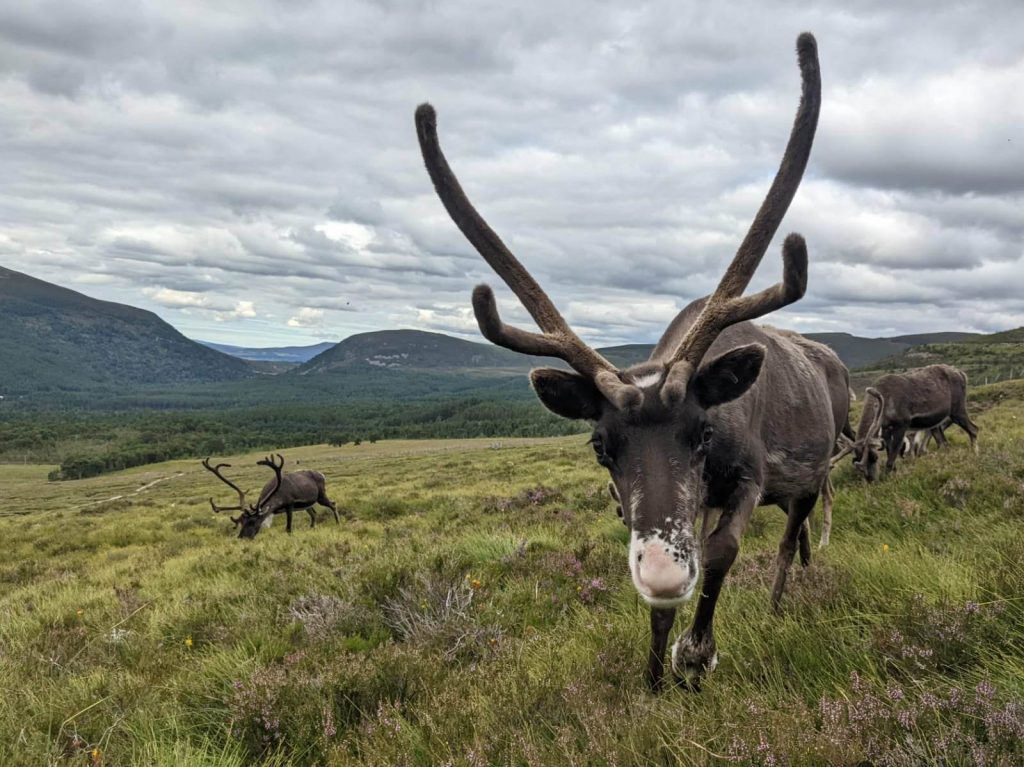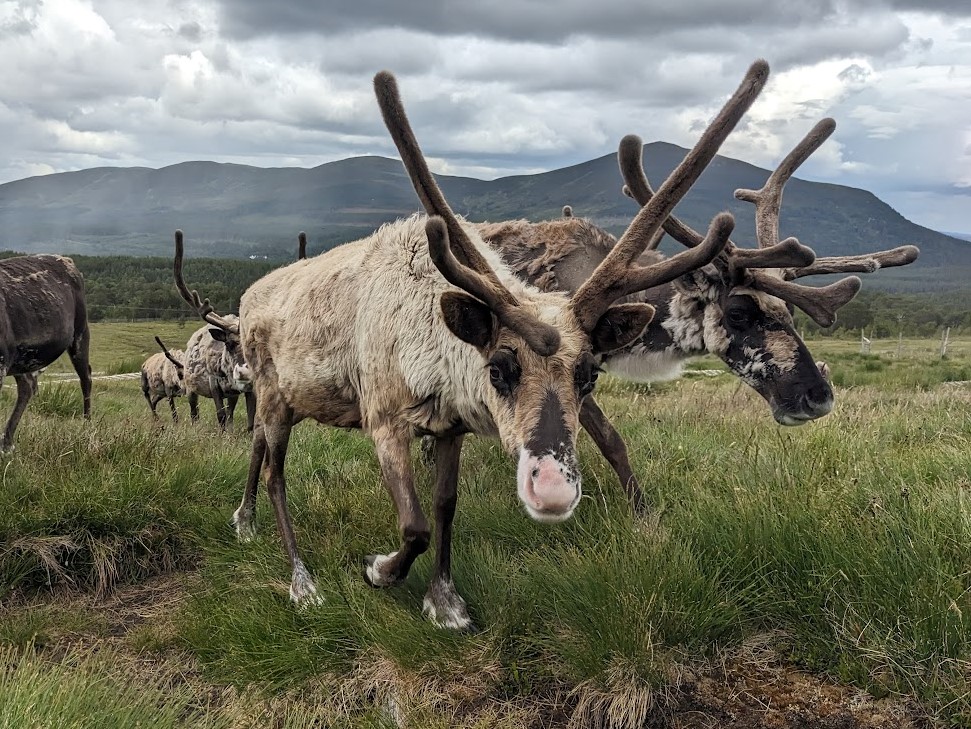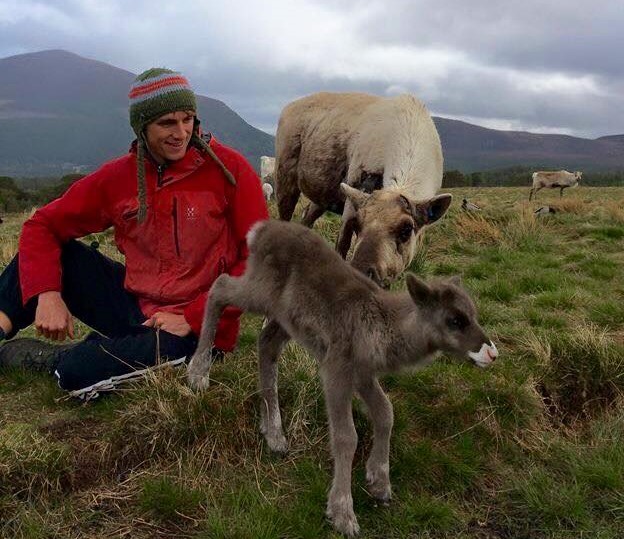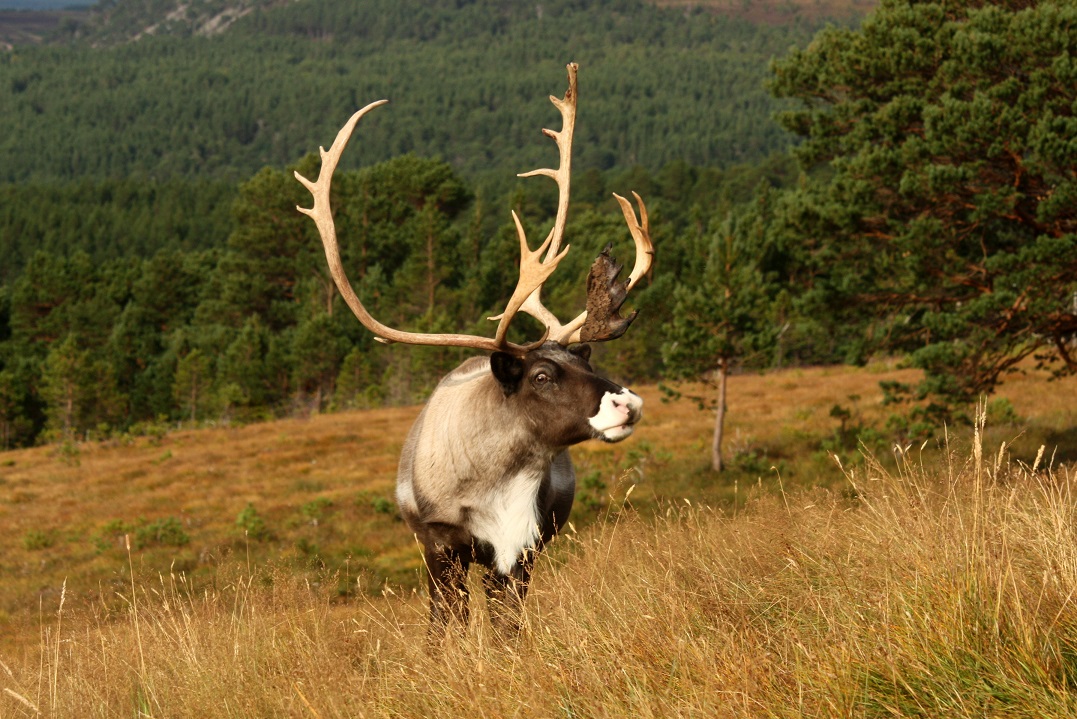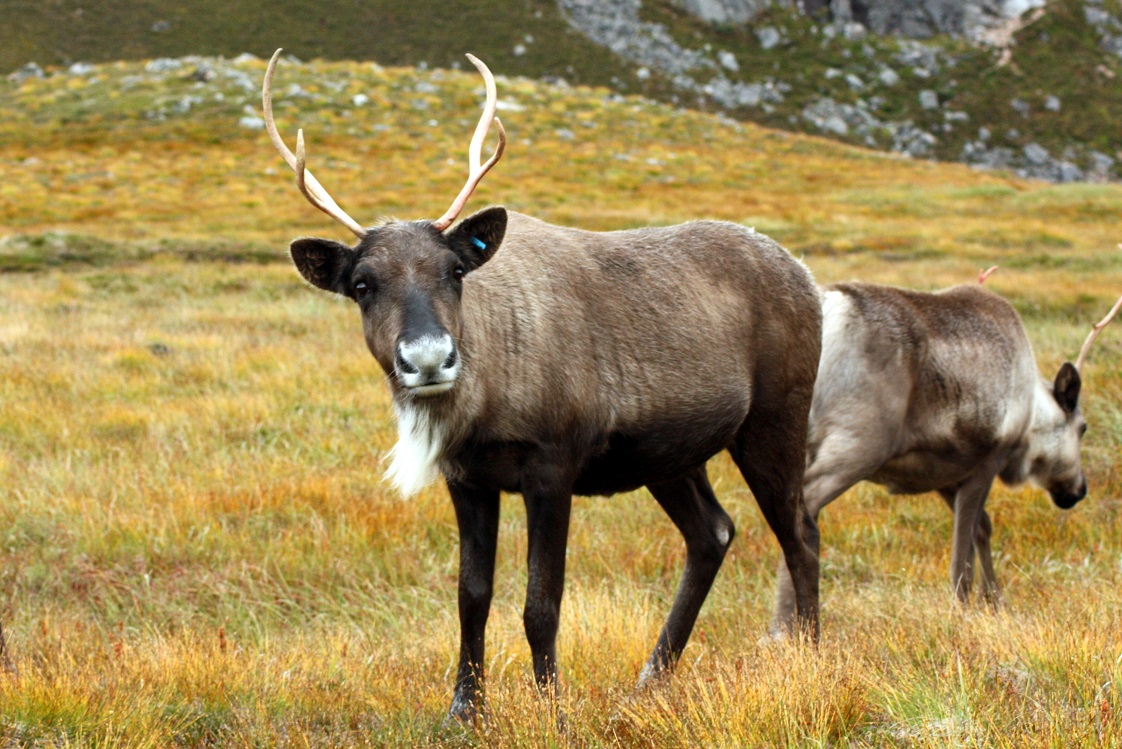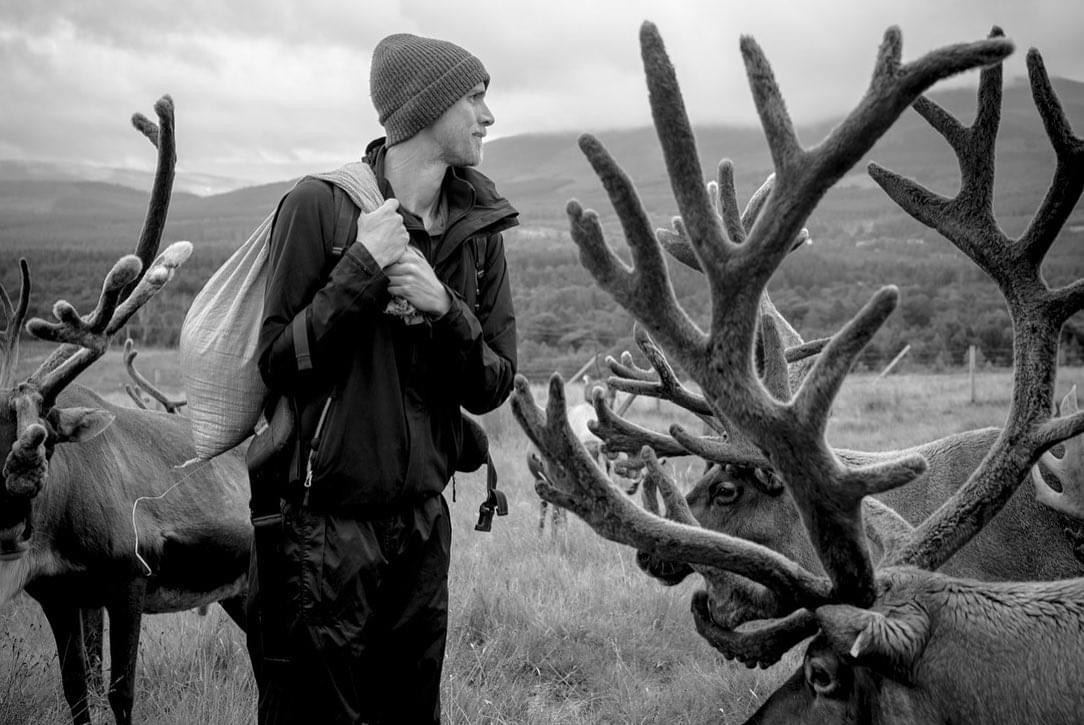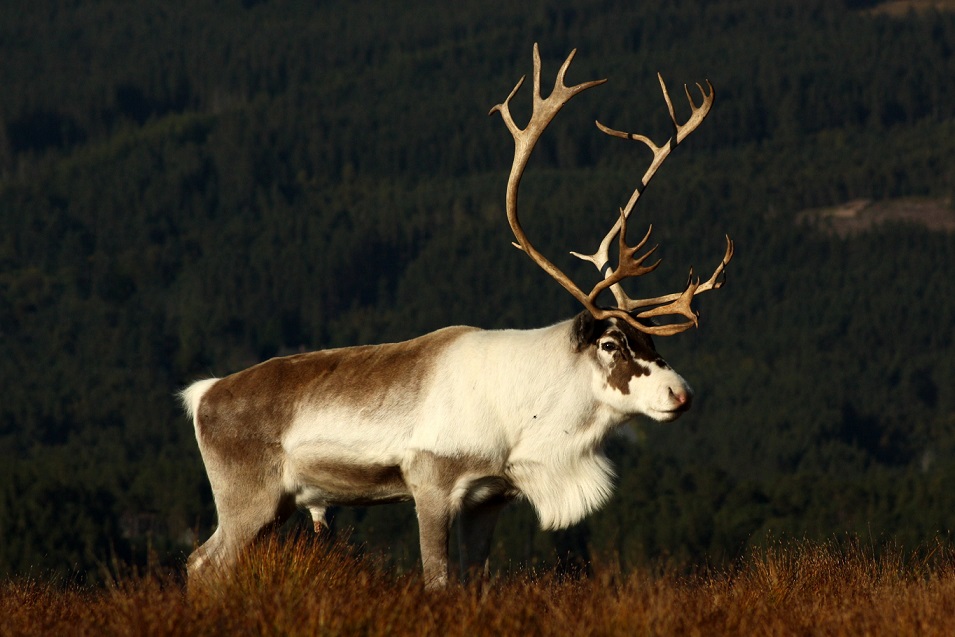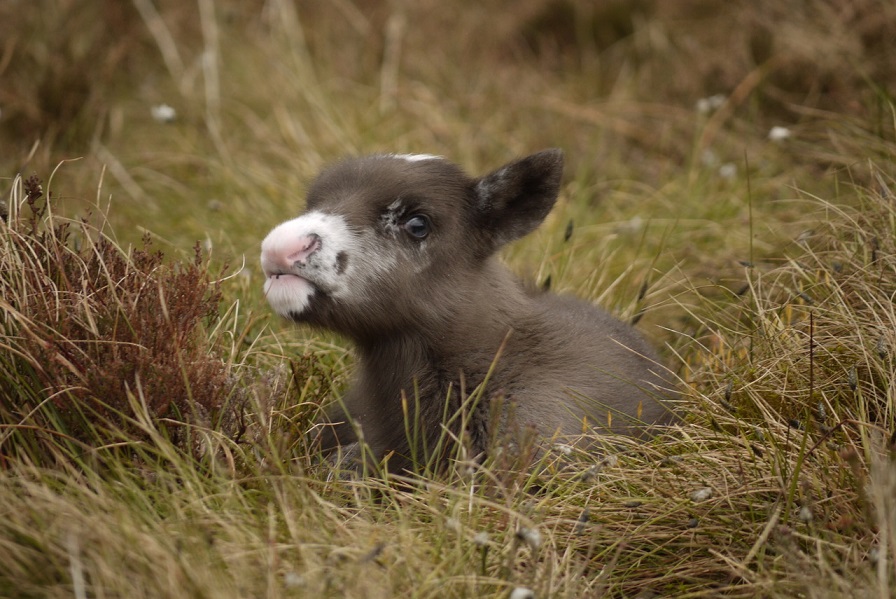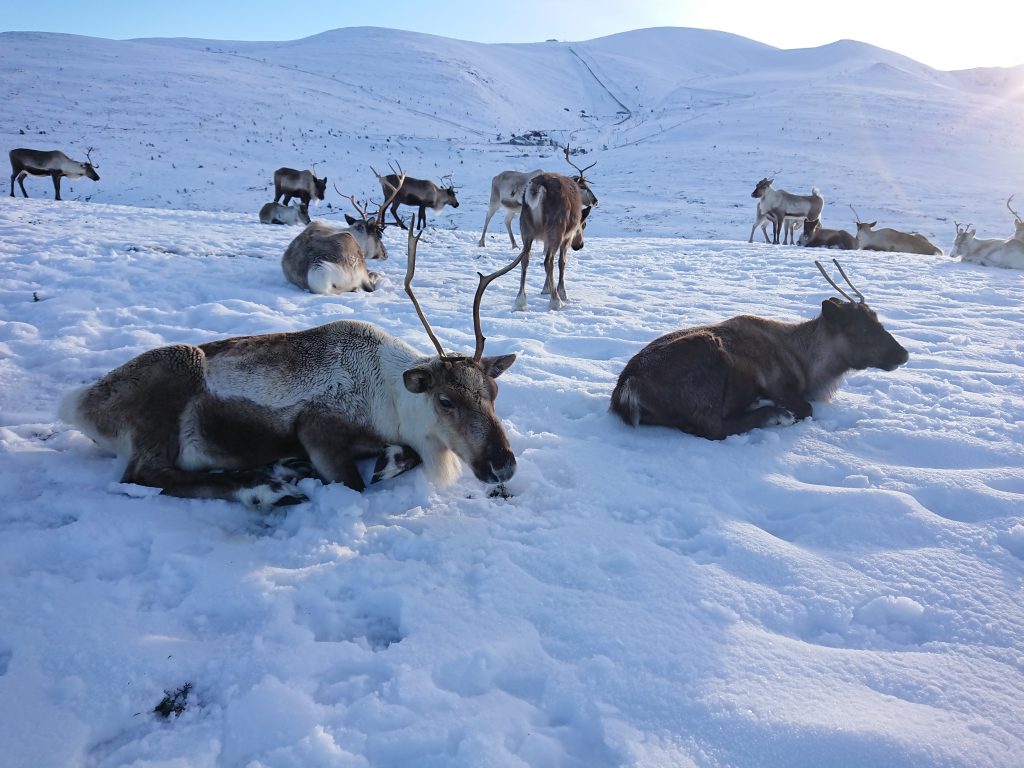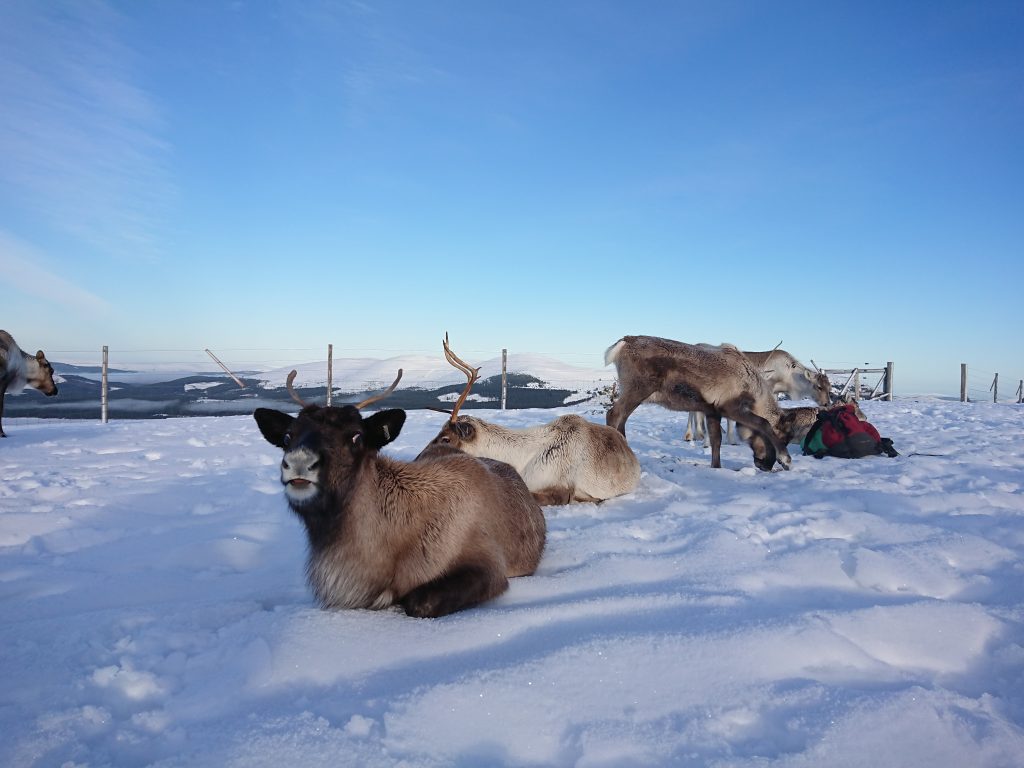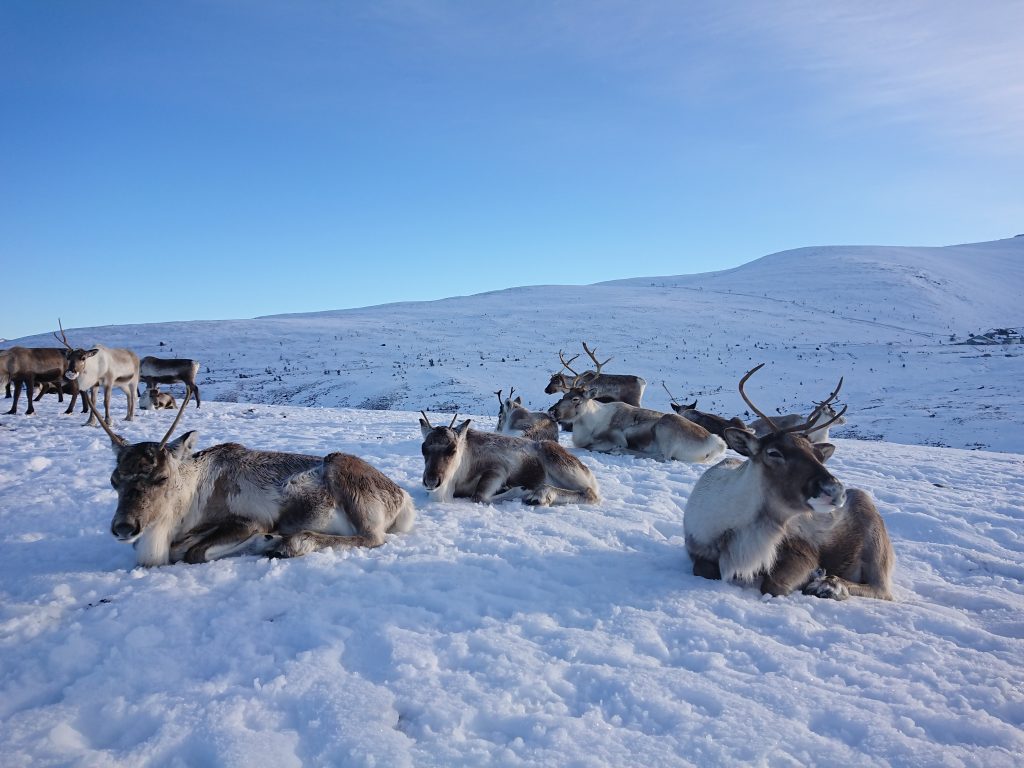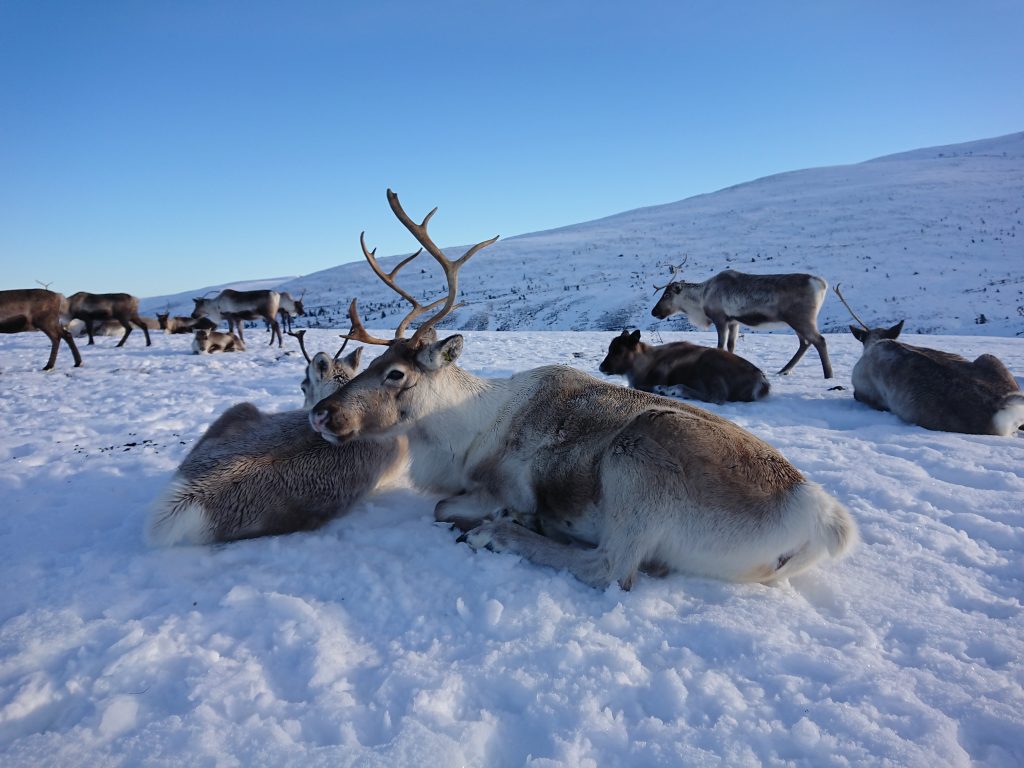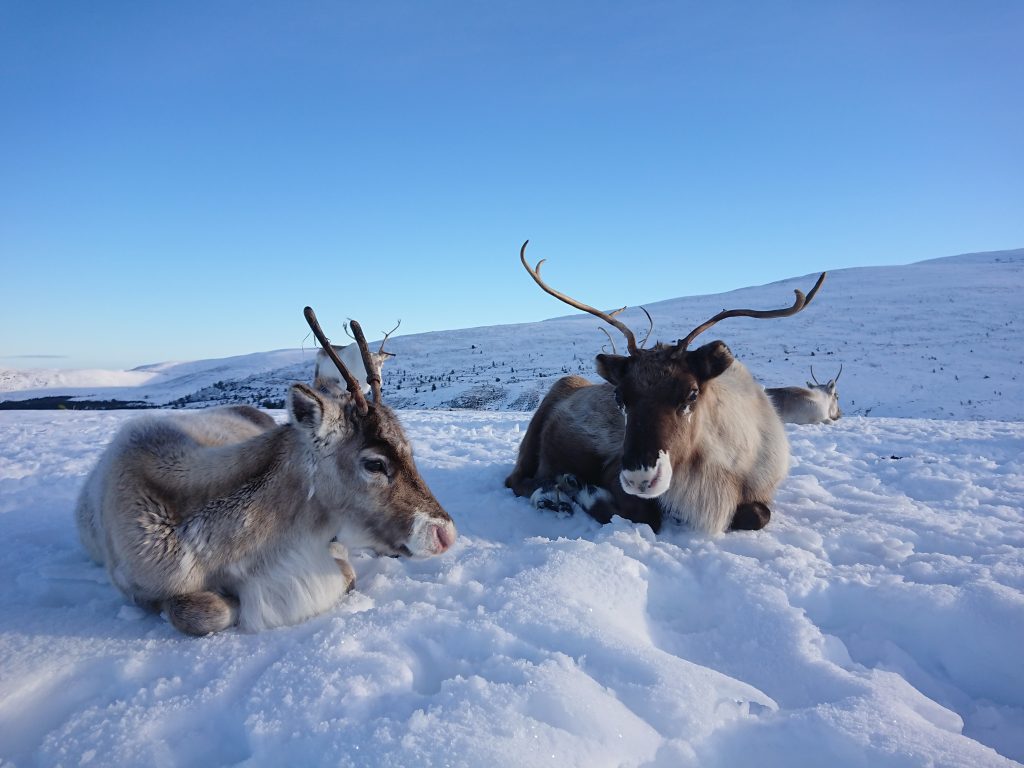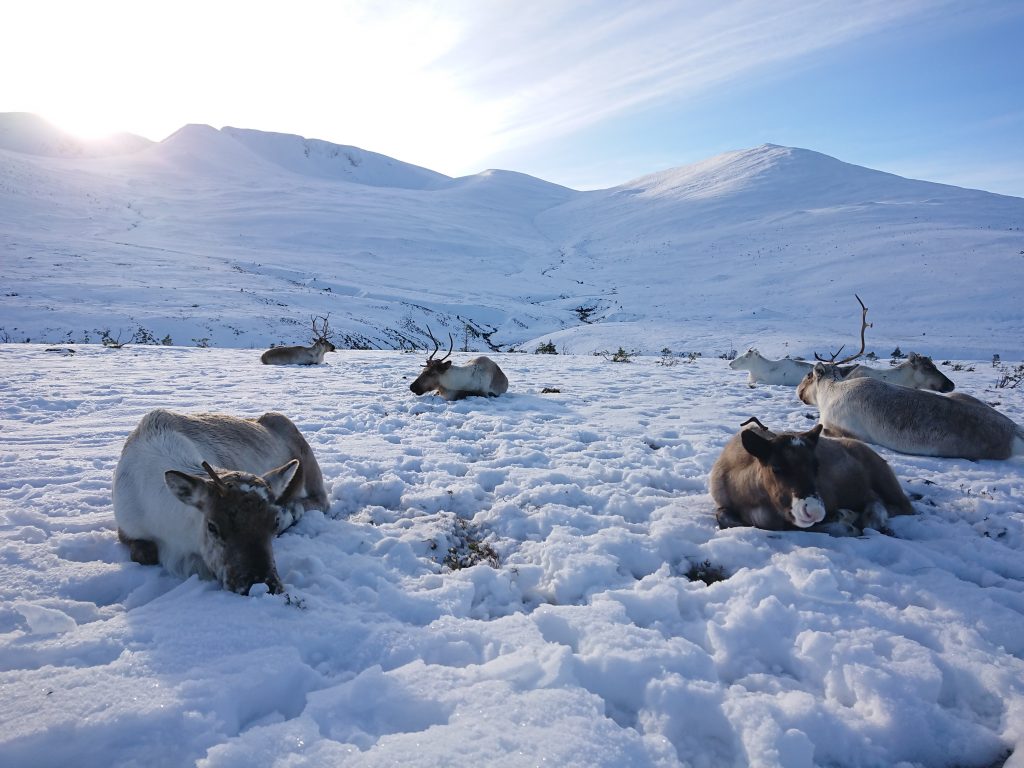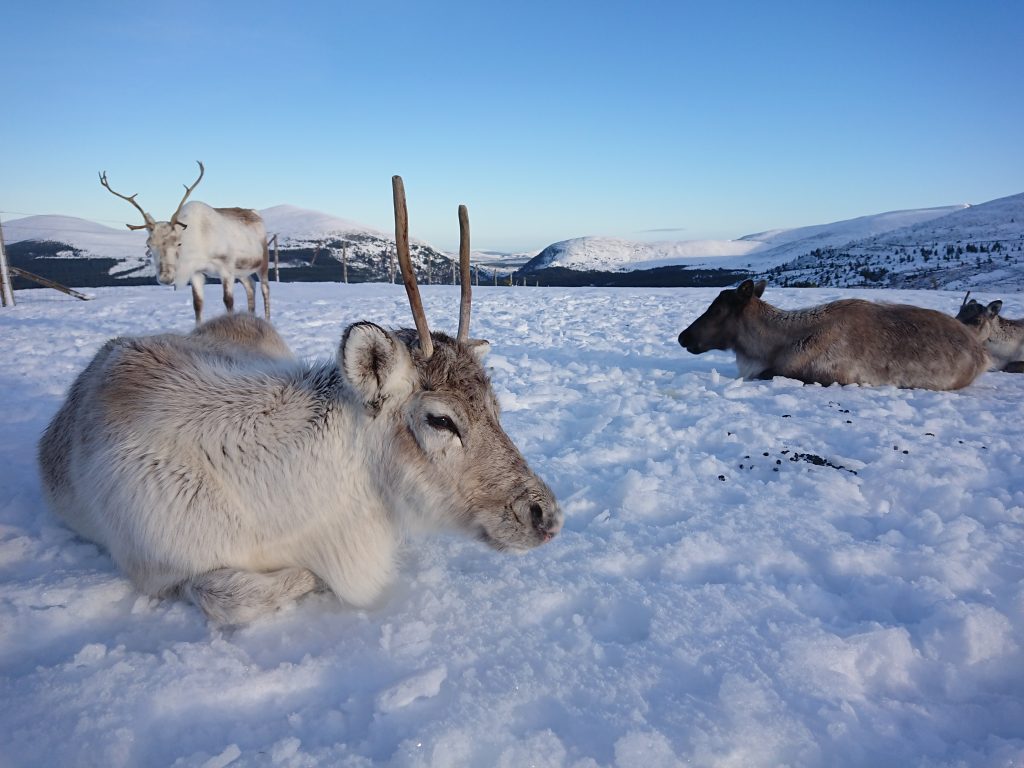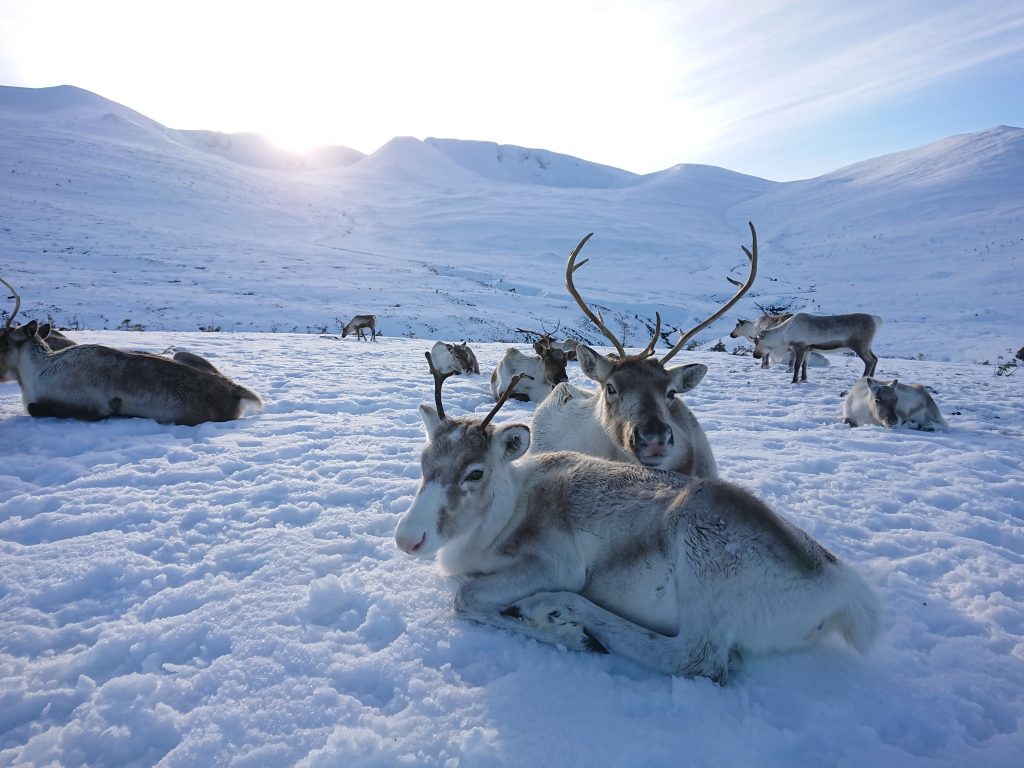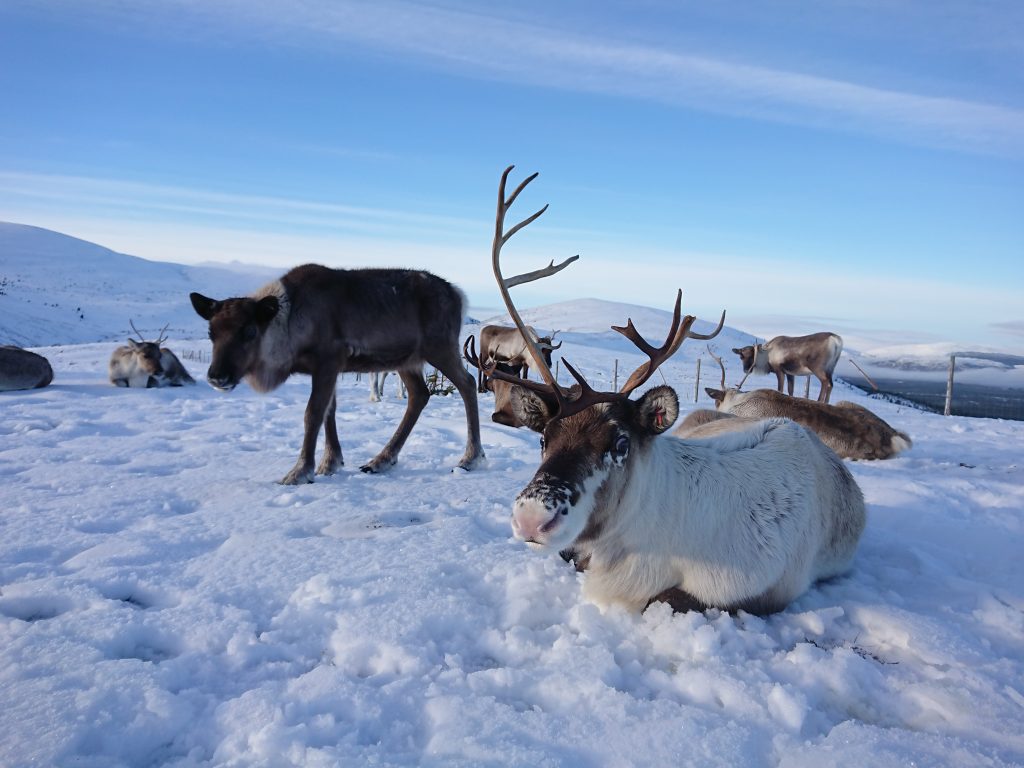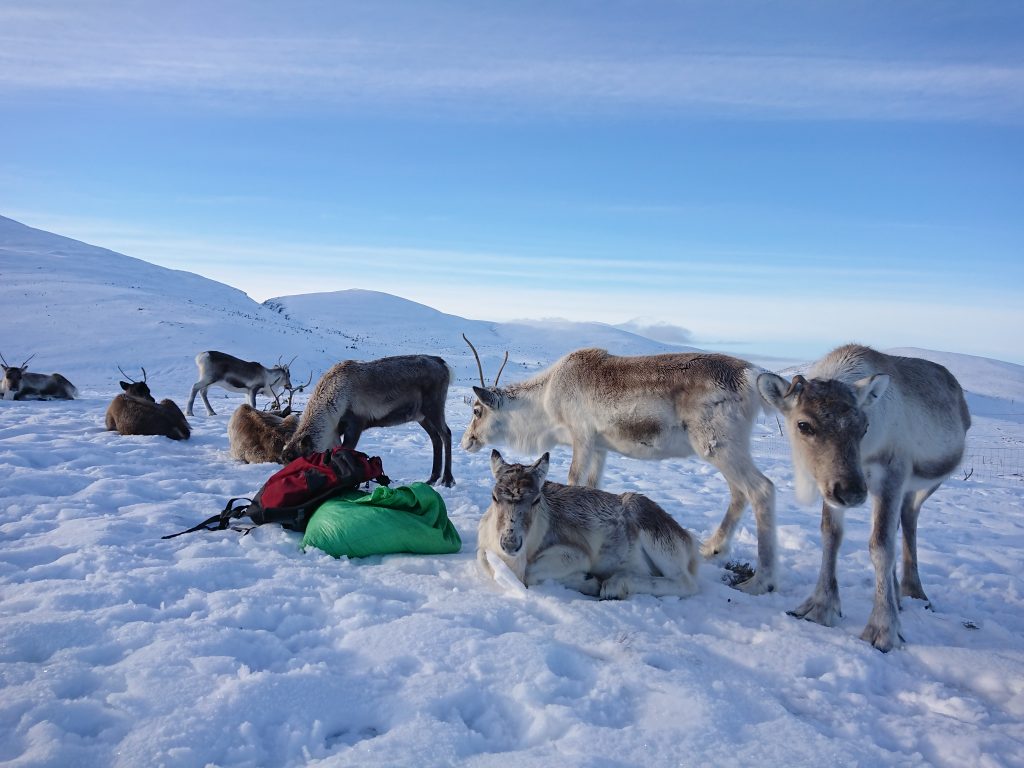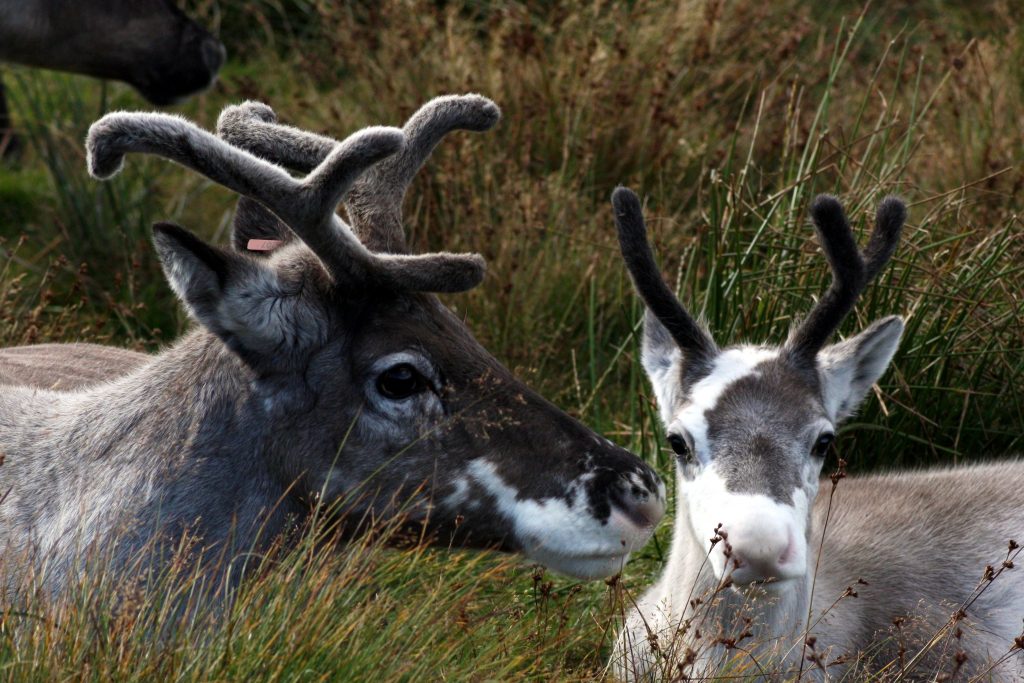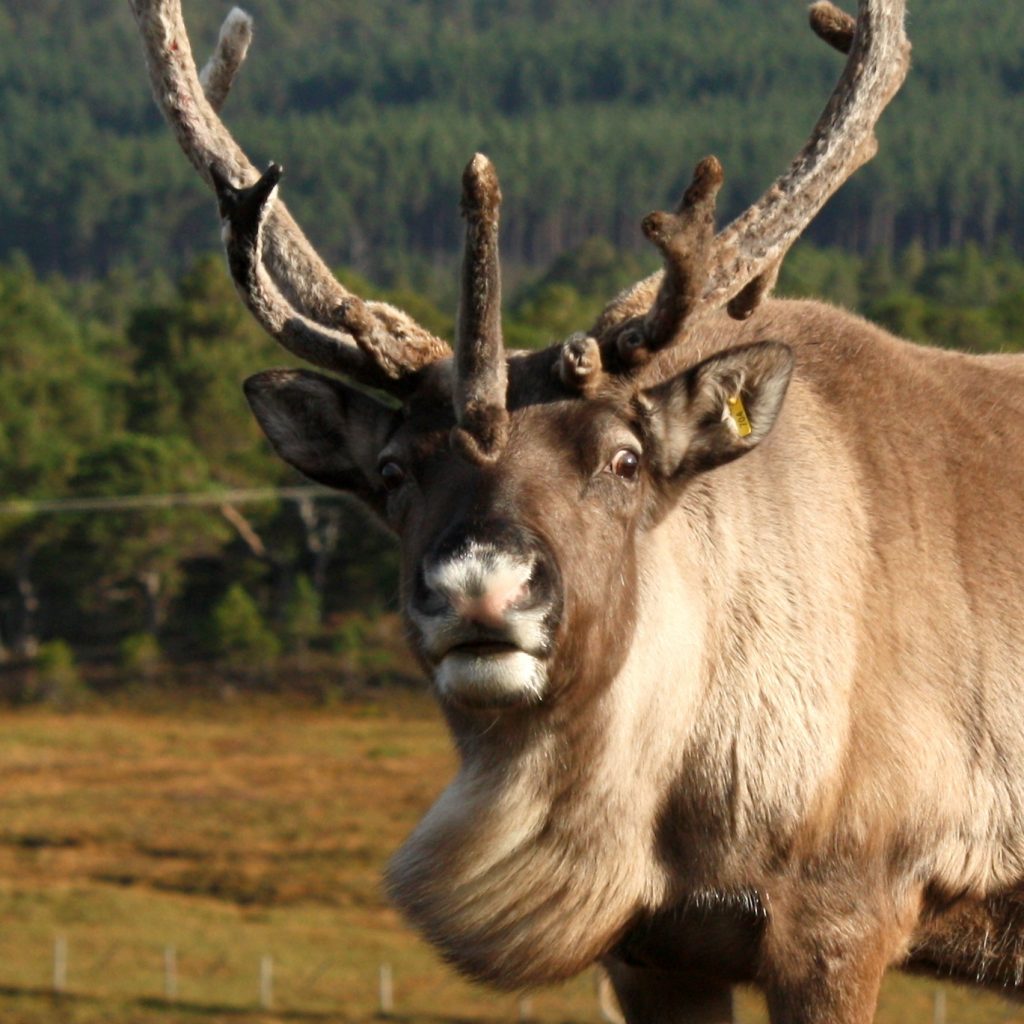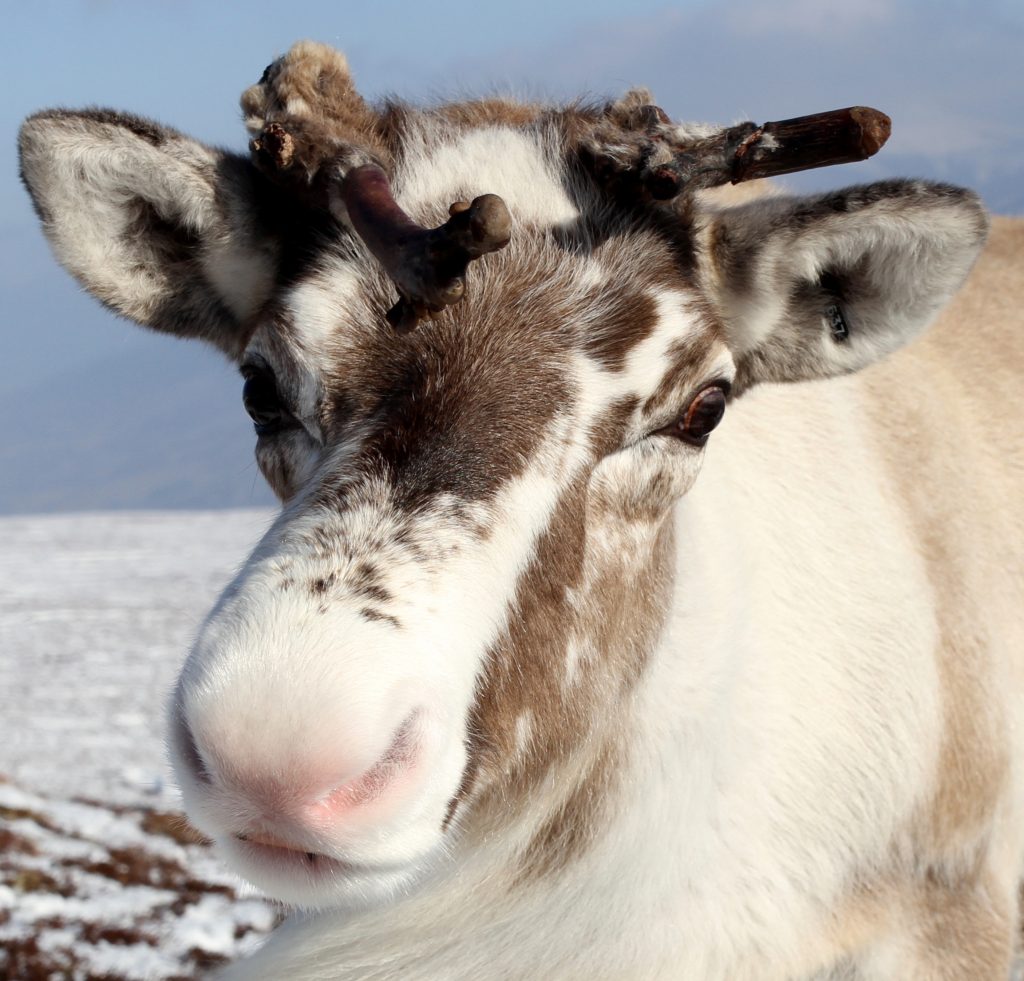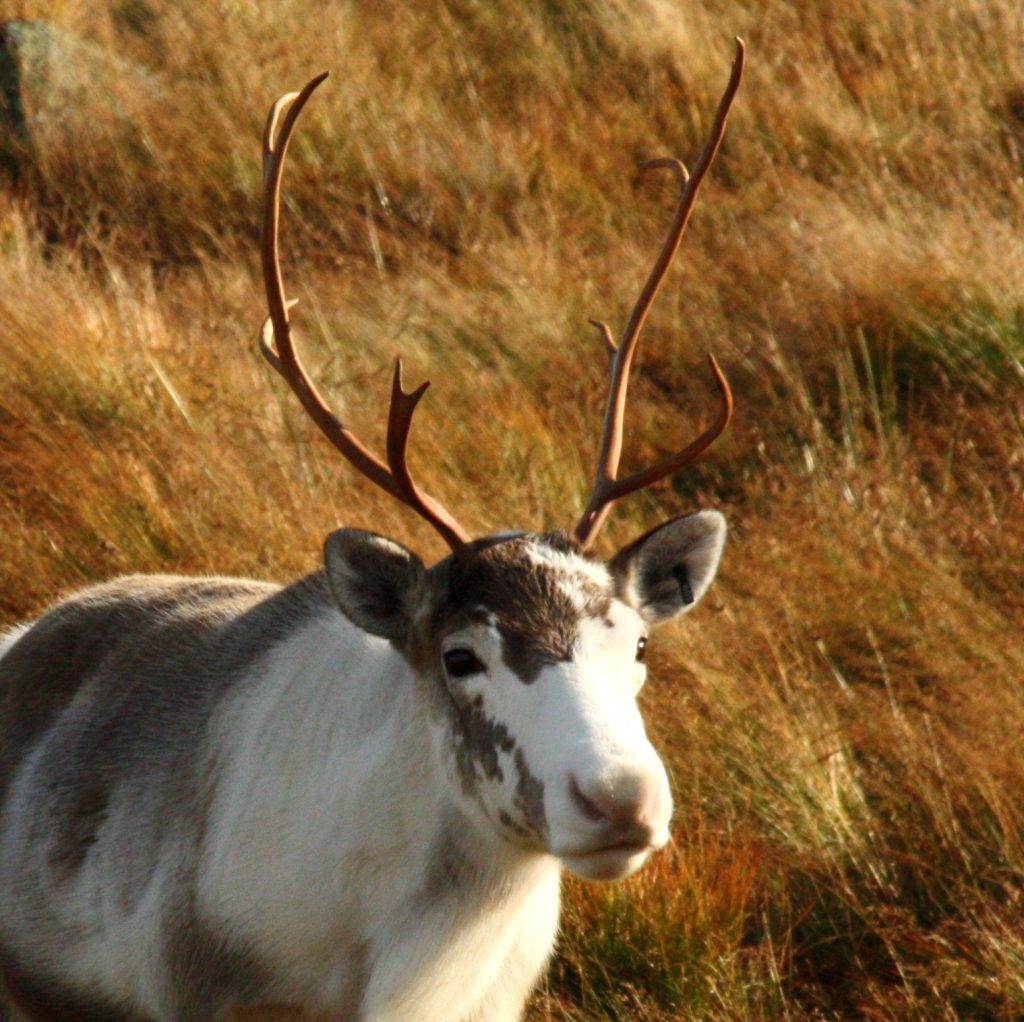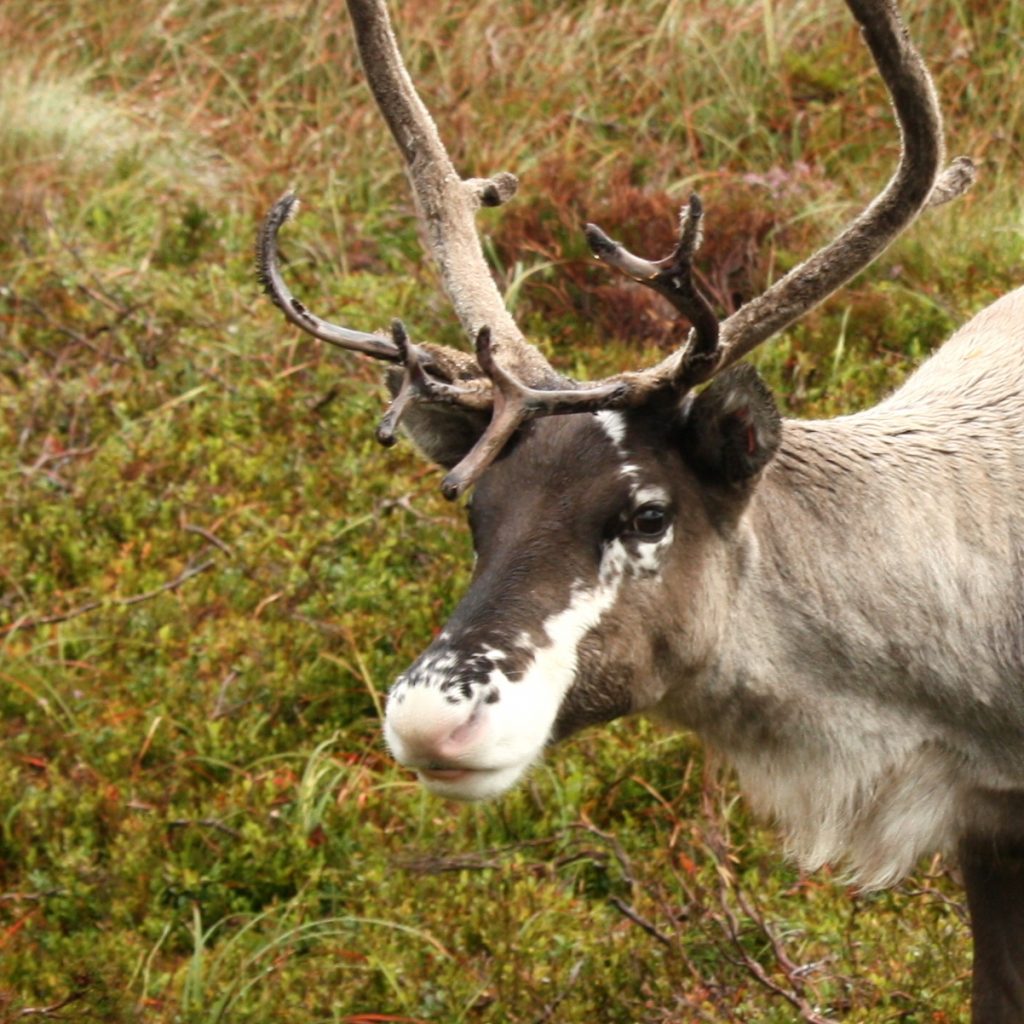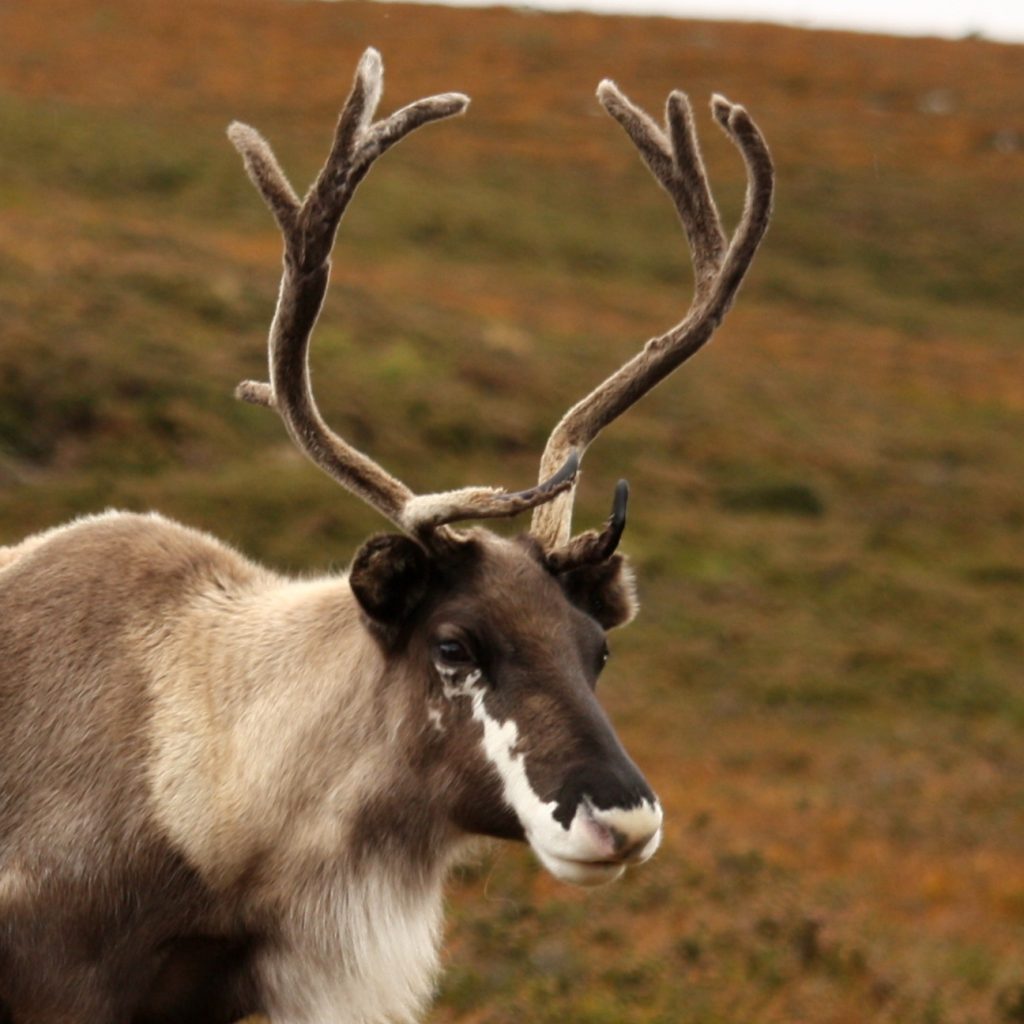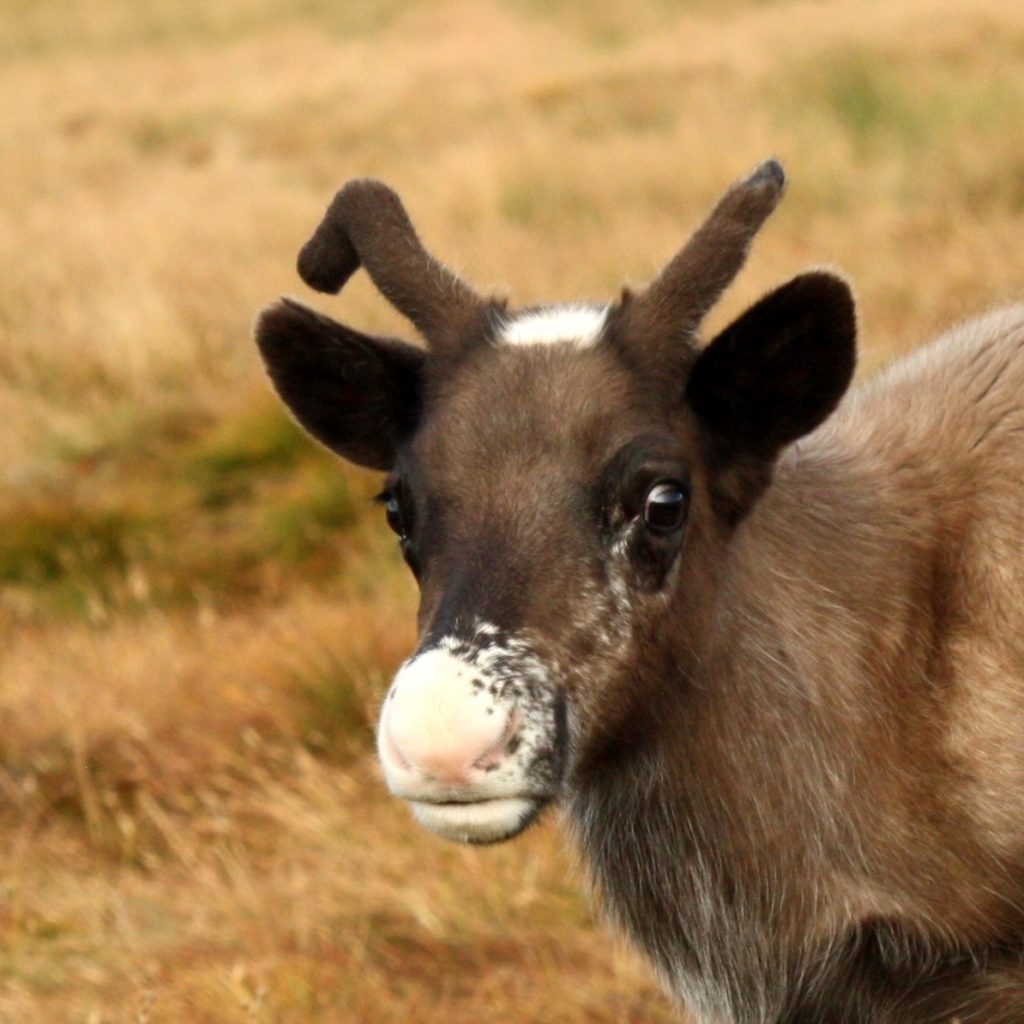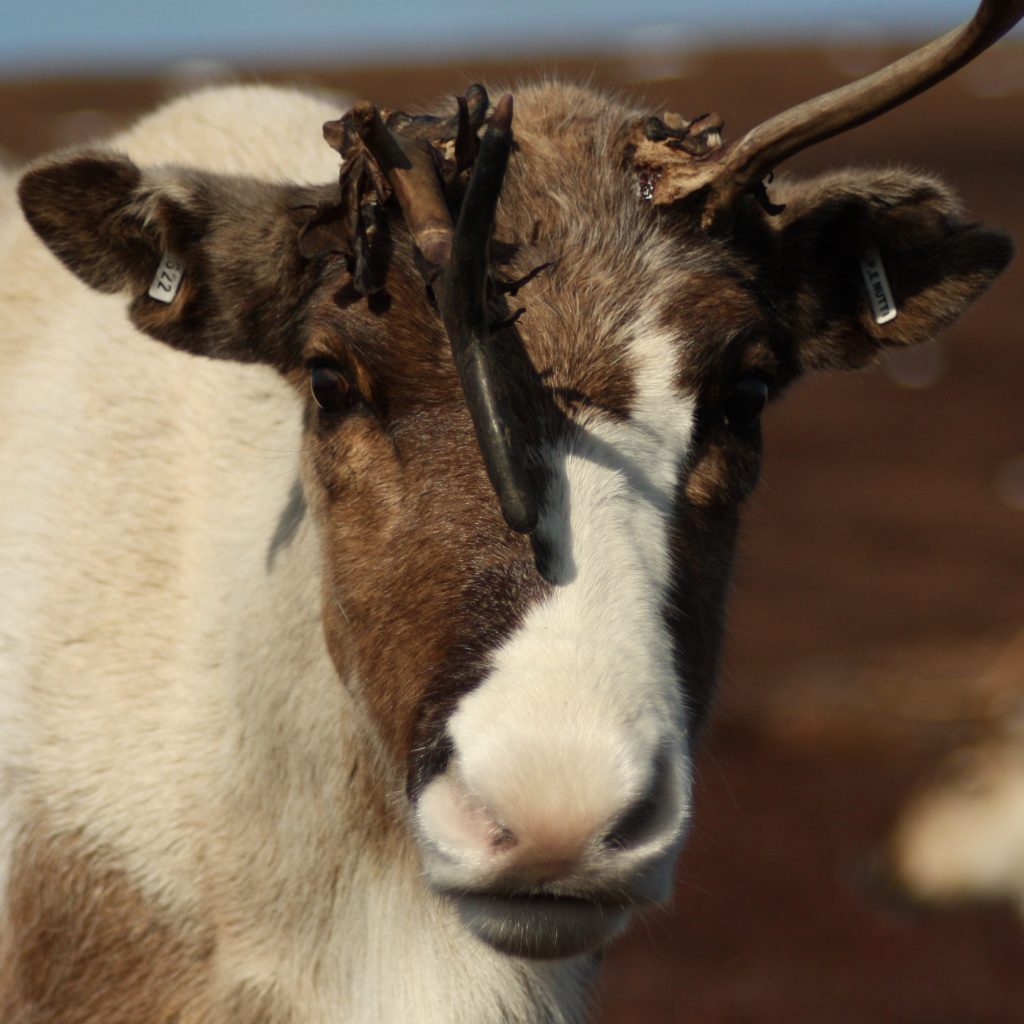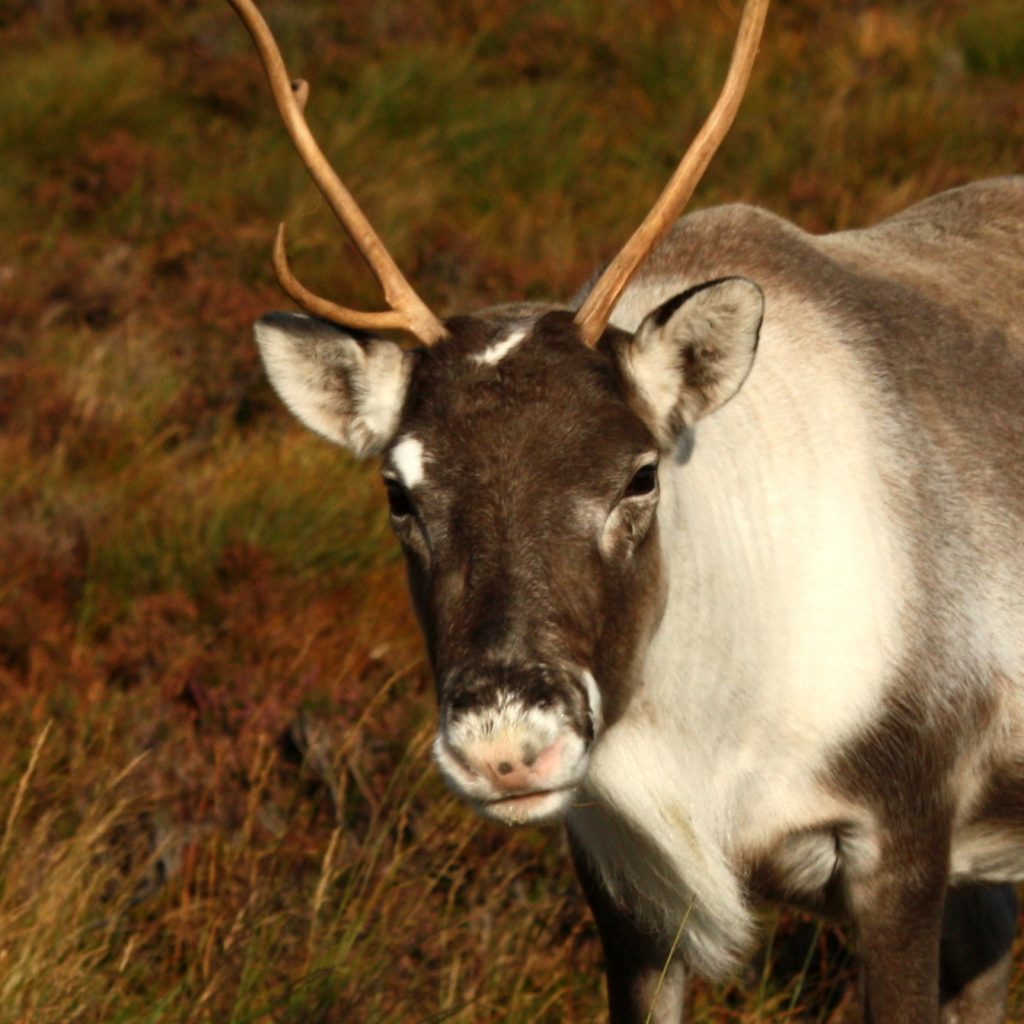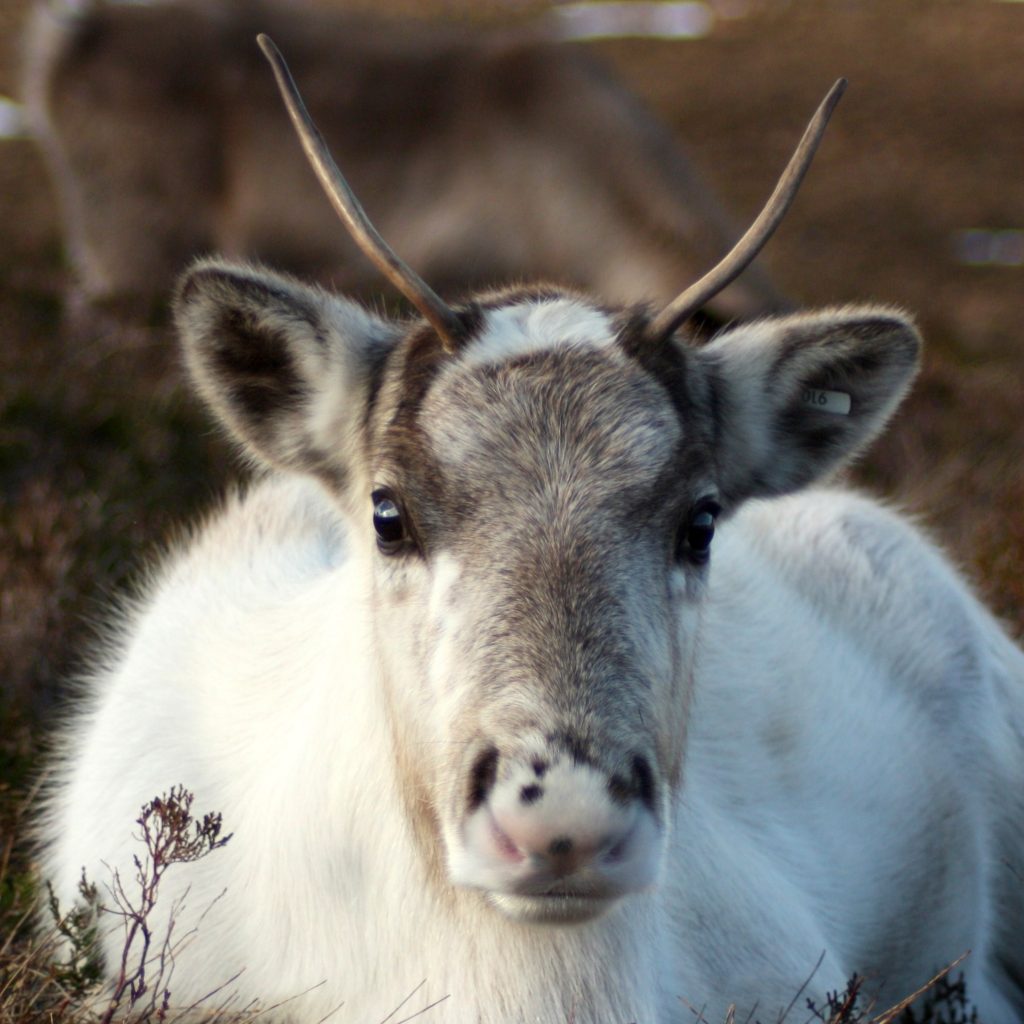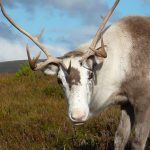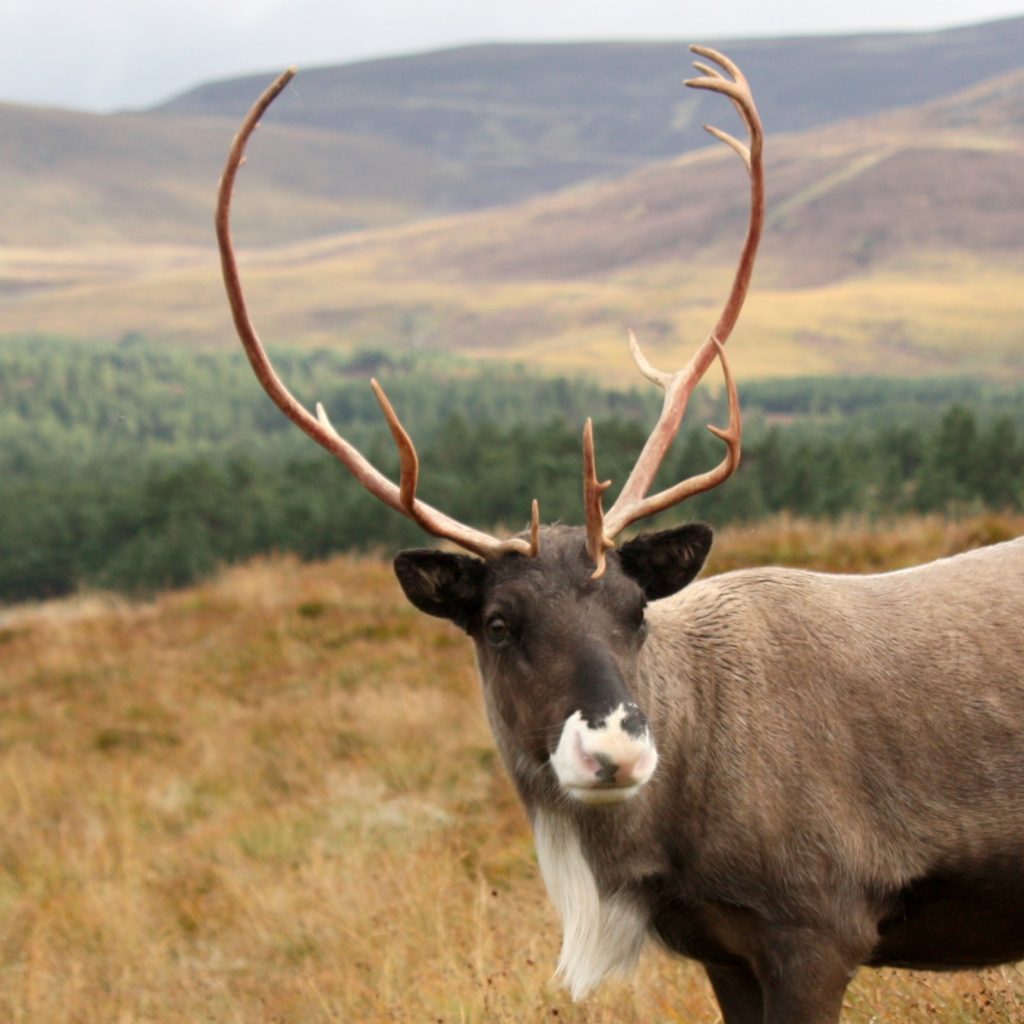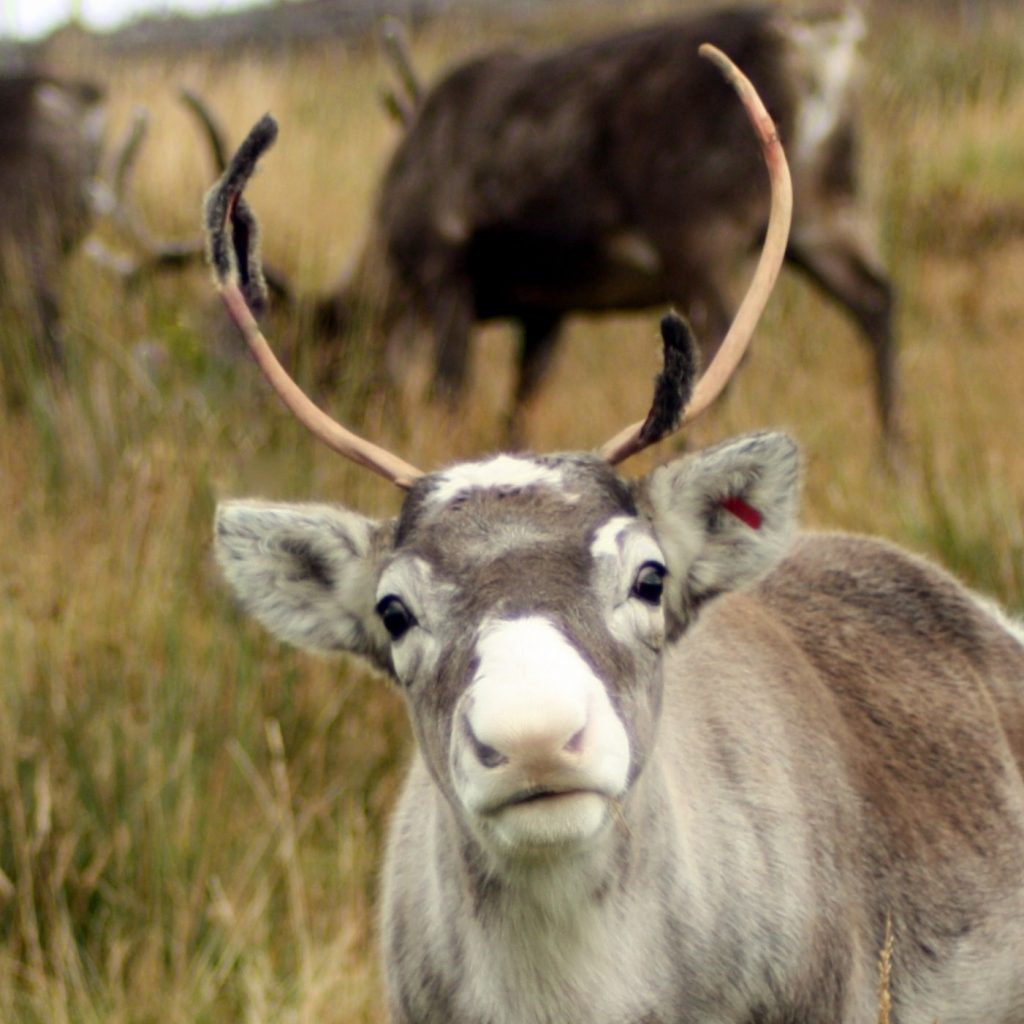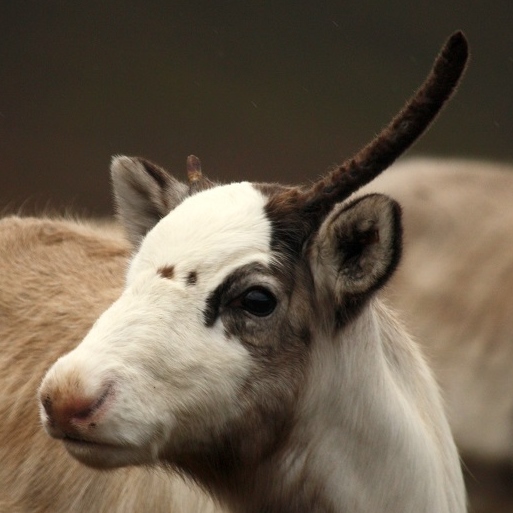Our usual annual practice is the reindeer calves born that spring will join a Christmas team of adult reindeer and go out and about on tour joining in Christmas festivities across the country. This is the start of their training and handling with us which means when the male calves grow up and go on to join a team as an adult with potentially a different role to play (i.e. trained to harness and pulling the sleigh) then they have already seen what events are all about so it’s helpful for their training going forward.
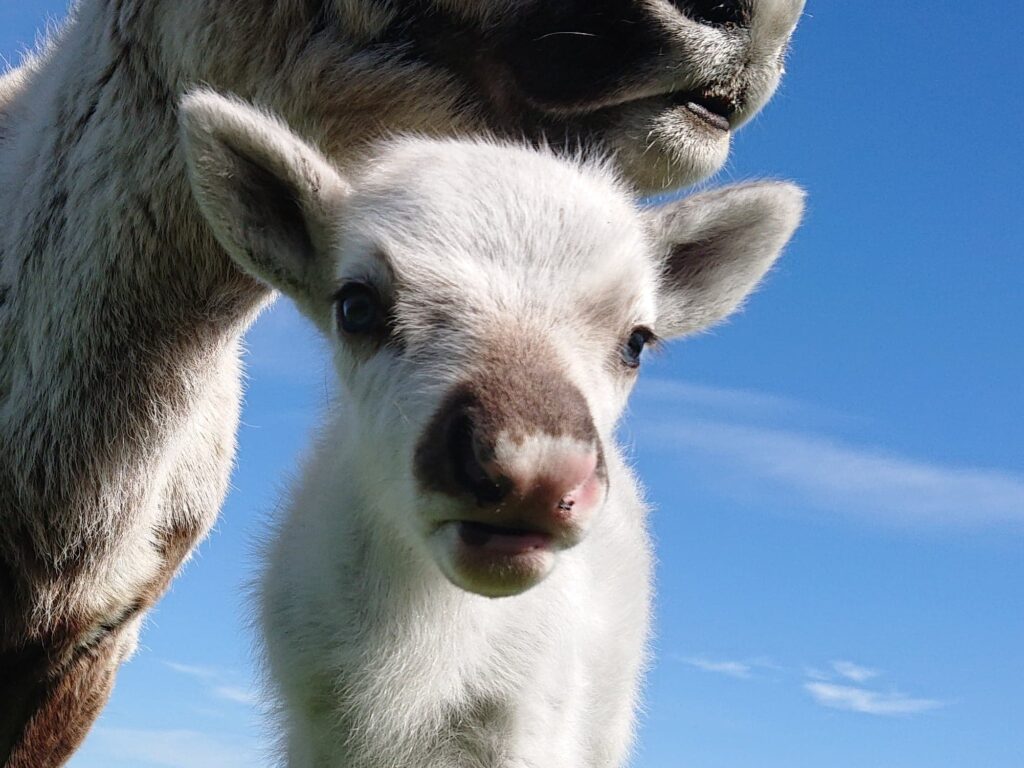
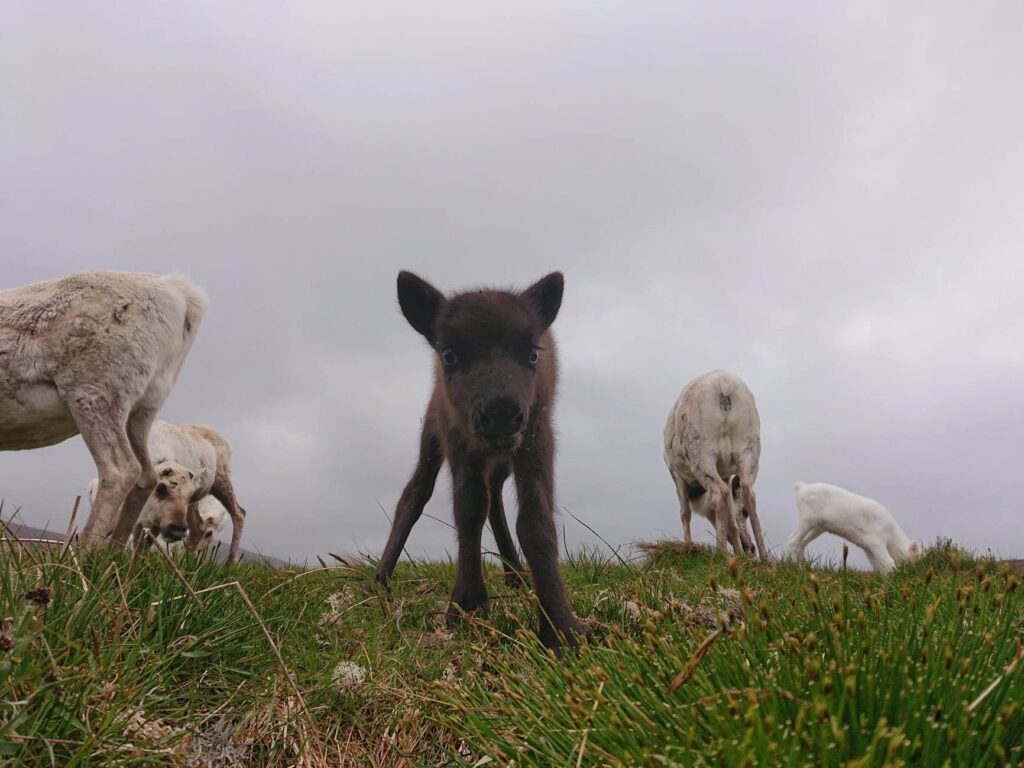
Back in 2020 all the calves born that year didn’t take part in many Christmas events due to our lack of bookings off the back of the COVID pandemic. We knew further down the line that we would have to work harder on these reindeer. Now Christmas 2023 is well behind us, this was the first Christmas where the three year old males were trained to wear harness and pull the sleigh for the first time. We don’t use female reindeer at Christmas as they tend to be pregnant at that time of year and the males we do use are castrates (non-breeding).
So our Christmas reindeer class of 2023 consisted of – Adzuki, Lupin, Haricot, Hemp and Cicero. Although there were more from that year these were the main five boys who went out and about on tour and pulled the sleigh for their first year. While training here in Glenmore I would say they certainly didn’t all take to it like a duck to water. Some were stubborn, some a bit too forward, however, we definitely got to the point over a number of days where they were used to wearing the harness and pulling the sleigh. Some better than others. I’d say Hemp, Haricot and Lupin did really well, whereas Adzuki and Cicero took a little longer but still did great!
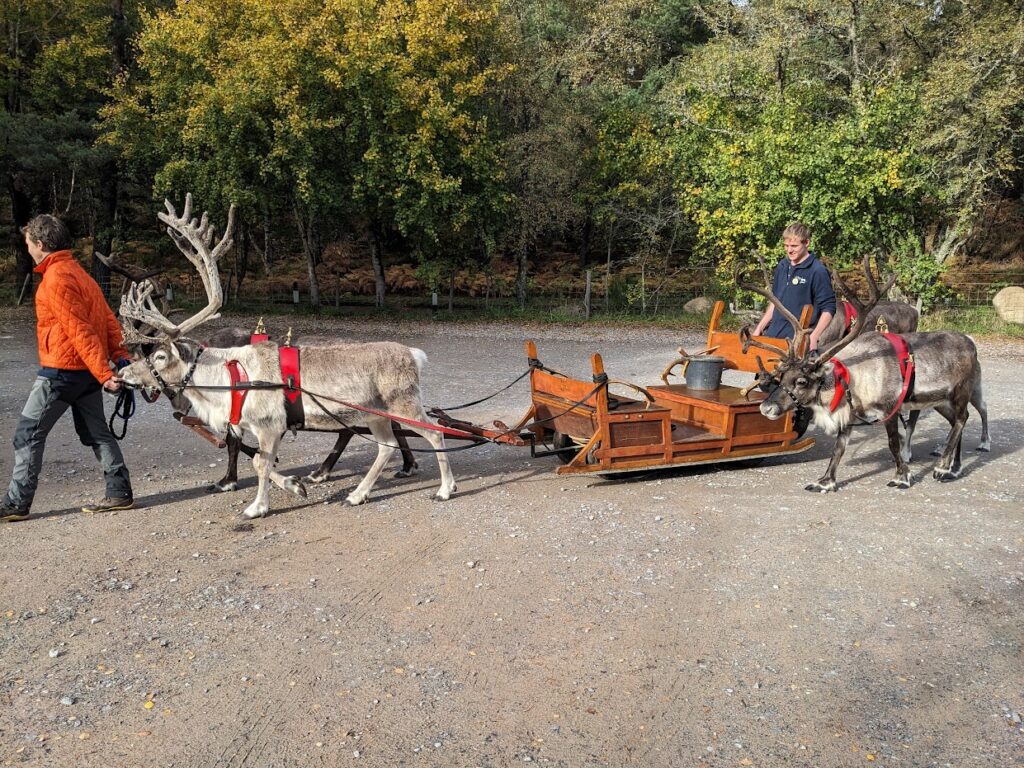
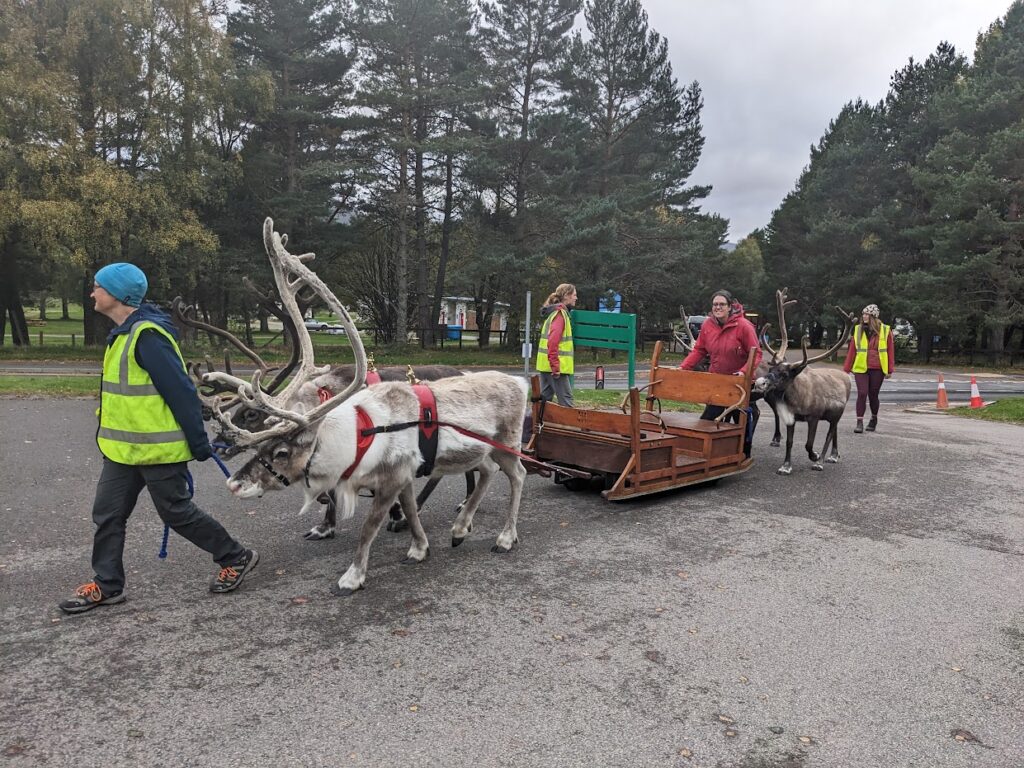
So now we get to the third weekend in November and it was time for them to head out with a team of experienced Christmas reindeer and herders to go and do a proper Christmas event. Haricot headed to Tain, a town in the north of Scotland, with Joe, Aurelien and Colin. Hemp and Cicero went to the west coast taking part in two parades that day in Fort William and Oban with Lotti, Lisette and Colin (a different Colin) and Lupin and Adzuki both came to Elgin with Ruth and I where we had further assistance from two of our long-term volunteers.
Time to parade in Tain and Haricot steps up alongside super-duper Christmas reindeer Poirot. In their set-up area Joe puts their harness on. Great, Haricot didn’t bat an eye lid. Now time to pop him in sleigh with Poirot, again he wasn’t fazed. Pipe band get set-up ready to start the parade. Joe is at the front leading and ‘alright boys, walk on’… nothing. ‘Alright boys, walk on’… again, nothing. Haricot decided that an empty sleigh in training was much easier to pull than a sleigh with a heavy Santa on it. After a bit of encouragement Haricot was having none of it so they made the sensible decision to swap him for Aztec (another of our trained Christmas reindeer) and therefore Haricot just had to walk at the back of the sleigh, not pull it. The event went really well but maybe back to the drawing board on this one.
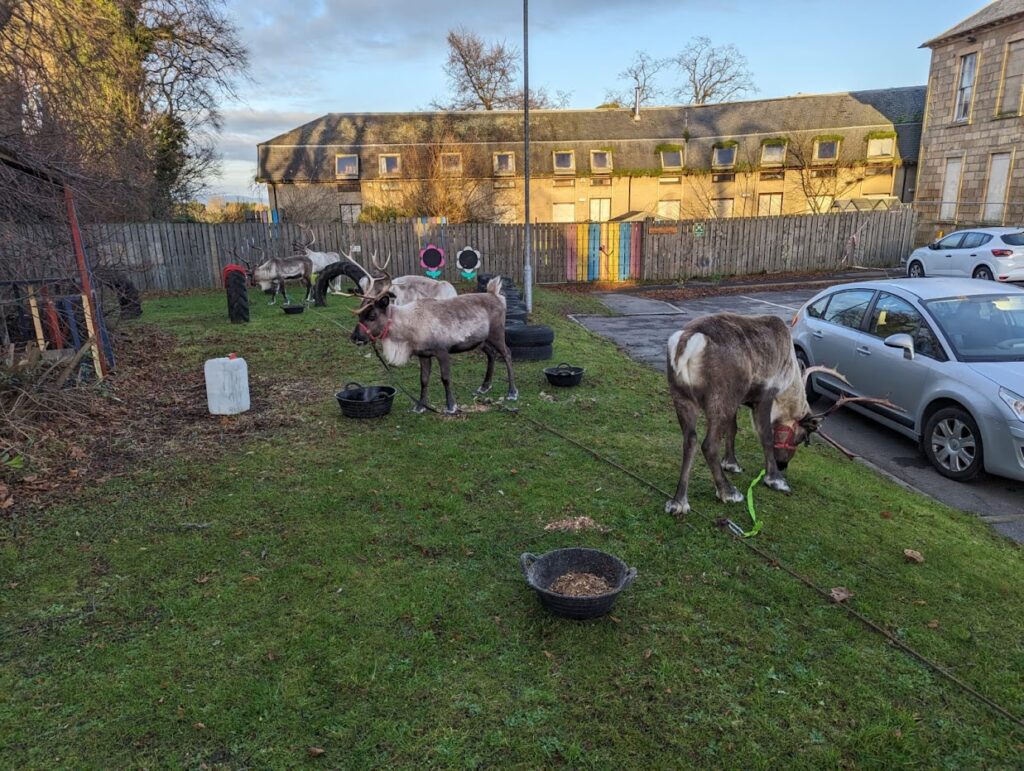
Now to the team on the west coast. Hemp actually went out on Christmas tour as a two year old, not pulling the sleigh but as a reindeer walking at the back so he has had a fair bit of exposure to these types of events. He pulled the sleigh alongside Frost and acted as though he’d done it his whole life. What a star! This was Cicero’s first time on an event so the team decided that he would be at the back of the sleigh to let him take it in and then aim to get him pulling the sleigh in Oban. The parade sets off following the pipe band with Frost and Hemp pulling and Cicero and Dr Seuss with the calves following behind the sleigh. Cicero thought by being at the back he was being left behind so was keen to go forward therefore Colin took his lead rope and walked him up front with the two reindeer pulling… Cicero thought this was much better and although it wasn’t how our usual parades looked with three reindeer at the front I don’t think anyone really noticed and Cicero was happy plodding along there.
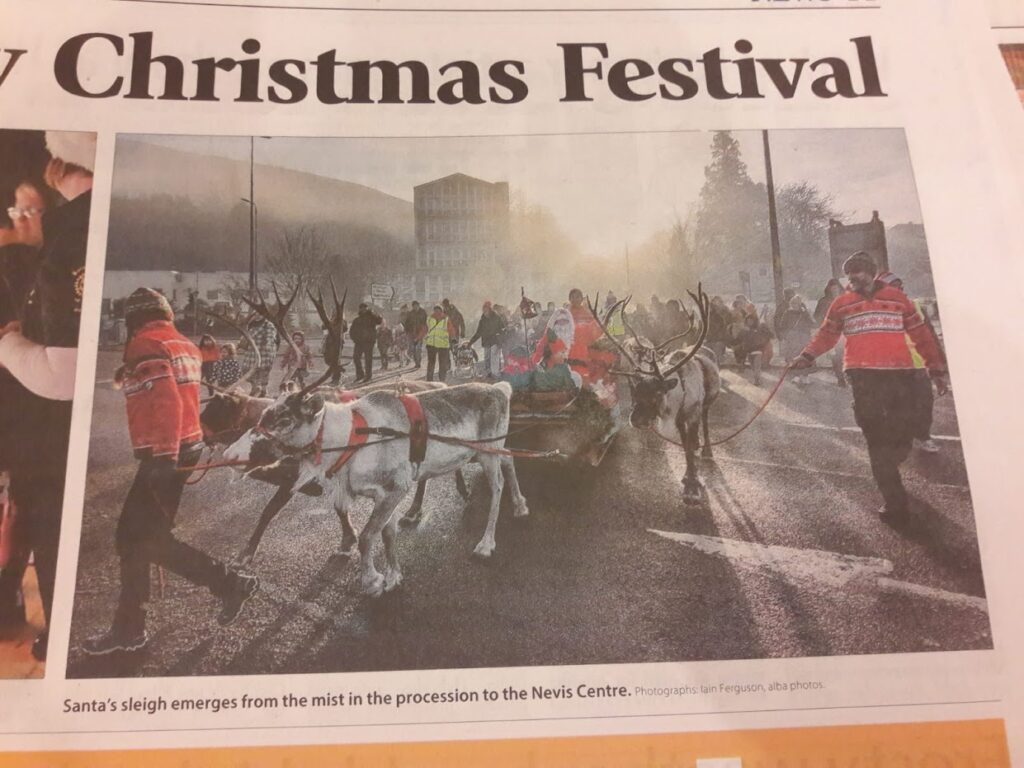
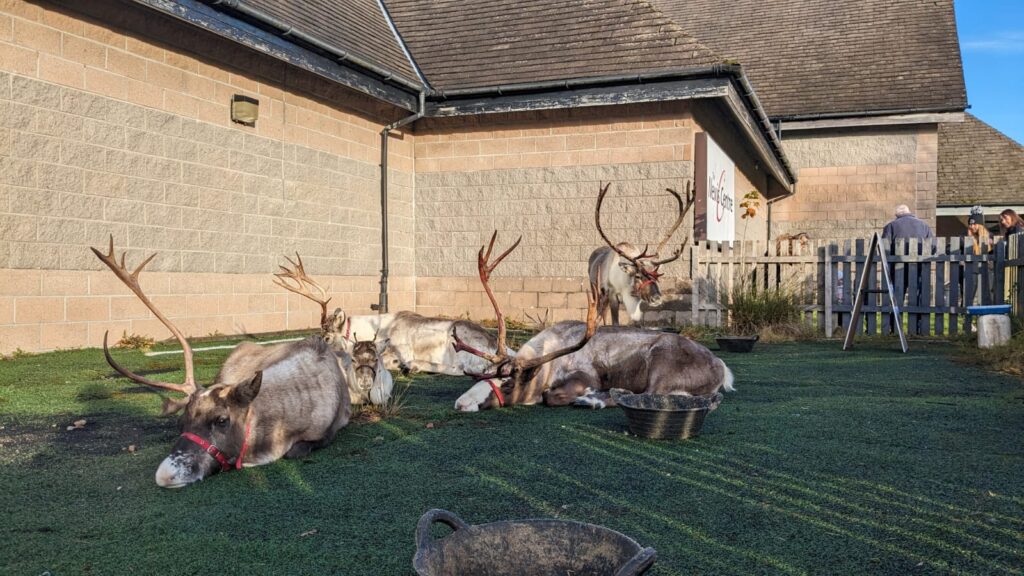
Now to Oban which is an evening event so pretty dark. For this one the team popped Cicero in the front alongside Dr Seuss (an old hand when it comes to pulling the sleigh). Contrary to Haricot, I don’t think Dr Seuss did any of the pulling during this parade as Cicero did it all. Give him his due he wasn’t fazed by a weighty Santa. To make sure he didn’t pull too hard two handlers walked with him at the front easing him into the ways of pulling the sleigh. I think he could do with a bit more practice, mainly to learn that there are two reindeer and both should be pulling the sleigh equally…. cough cough, Dr Seuss!!!
Now onto Elgin where I was with Ruth and a couple of volunteers as well as newbies Lupin and Adzuki. We decide that Lupin could pull the sleigh and Adzuki would learn the ropes at the back. We set off, again following a pipe band. Lupin was a total star! Didn’t put a hoof wrong and pulled equally alongside pro Druid. Adzuki, however, like Cicero wasn’t for being left behind at the back of the sleigh and was keen to go forward. Each team makes there own decisions with how to manage their reindeer in the best way they think and it was correct for Cicero to be led forward but in my case I made a different decision as I wanted Adzuki to learn that actually being at the back of the sleigh was absolutely fine and there was no need for him to want to go forward. In my quick thinking I asked one of the volunteers to pass me a sneaky bag of lichen hidden Santa’s bag. With a tasty handful of lichen in my hand suddenly Adzuki was pretty delighted to be walking at the back of the sleigh. This got us through the parade wonderfully but I knew this wasn’t a solution long term. I mean we would have a very happy Adzuki but ultimately he had to learn that lichen wasn’t always going to be available.
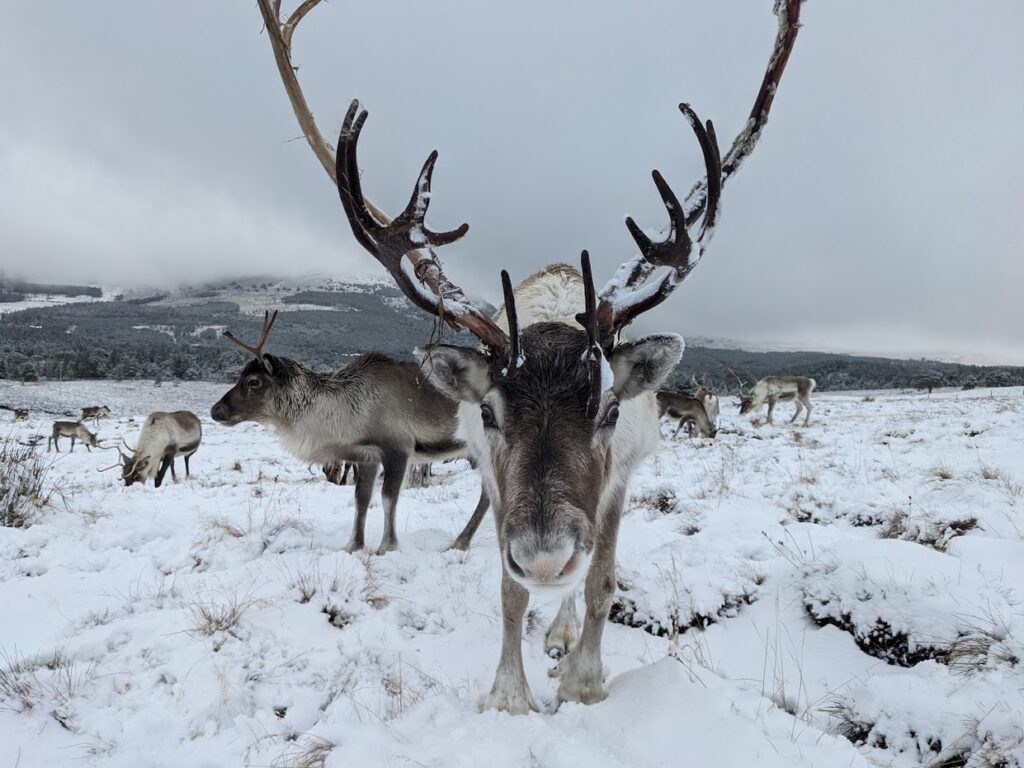
The teams came home after that weekend all with their own stories of their ‘COVID calves come adults’ and how it wasn’t quite as smooth sailing as other years. However, they were by no means put off, we just had to be canny with how we handled them and which events they went on. Every weekend they would join a team. Haricot pulled the sleigh at Aberfeldy the following weekend and this time we gave him some help by pushing the sleigh therefore all he had to do was walk at the front. ‘He was a total star’ as reported back by Ruth! Lupin was also in that team but as he pulled like a pro last time he went at the back this time and absolutely nailed it! Cicero the following weekend had a reindeer only event so no parade for him. This type of exposure is still really great though and goes towards his training. Adzuki came to a local event with myself and Mel. It was a short parade but already he was better than before… again the more exposure the better.
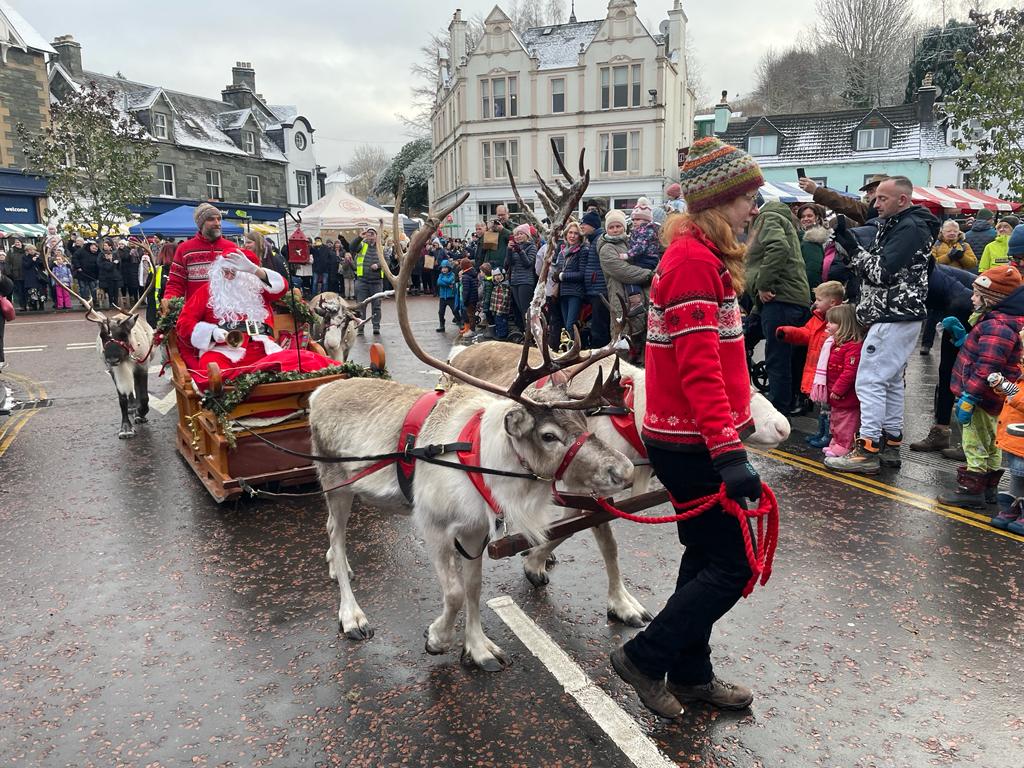
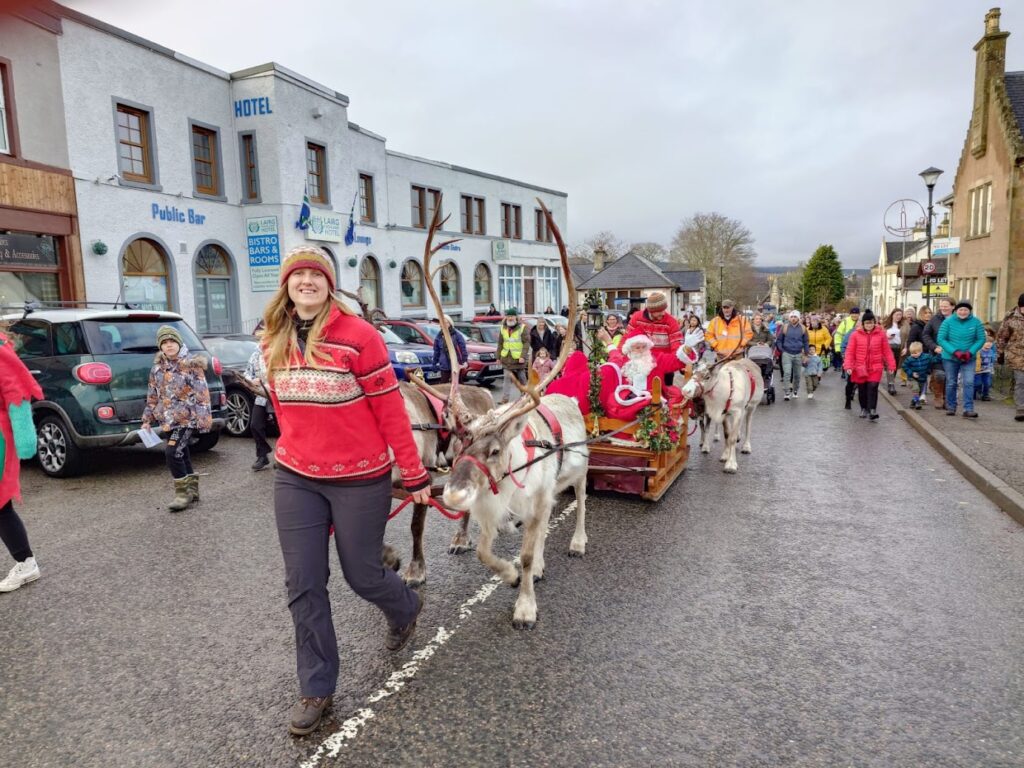
Christmas Eve and Christmas Day can be two of the busiest days of the year. There are three parades locally on Christmas Eve and they can be dark, busy and fast pace whereas Christmas day there are four parades and they are a bit more laid back and all in the light of day which is easier. With Haricot and Lupin taking to it better than Cicero and Adzuki we decided they would do Christmas Eve and that would leave Christmas Day to Cicero and Adzuki. All alongside some of our other trained Christmas reindeer of course. I cannot sing their praises more, all four boys were absolute superstars! With full sets of antlers they all looked beautiful in the front of the sleigh. They make us feel so proud!
The biggest reward is of course heading to winter free range which happens after Christmas. So to finish off the photos here is Adzuki, still with his enormous set of antlers in February while free ranging with the rest of the herd.
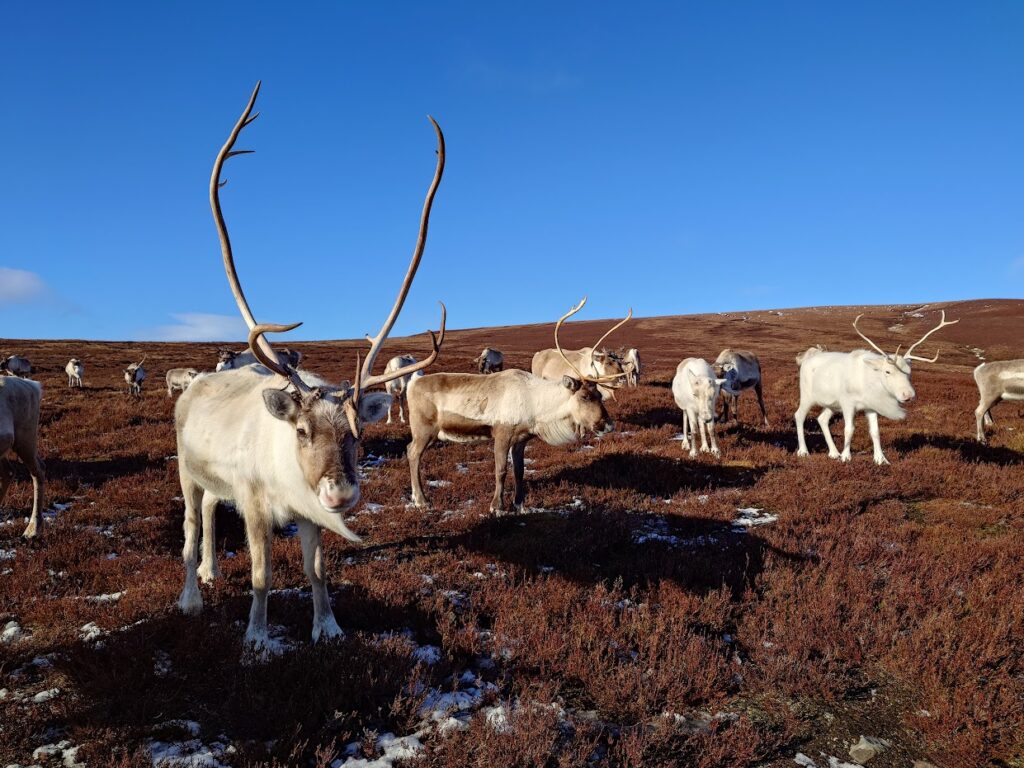
Fiona

